- EssayBasics.com
- Pay For Essay
- Write My Essay
- Homework Writing Help
- Essay Editing Service
- Thesis Writing Help
- Write My College Essay
- Do My Essay
- Term Paper Writing Service
- Coursework Writing Service
- Write My Research Paper
- Assignment Writing Help
- Essay Writing Help
- Call Now! (USA) Login Order now
- EssayBasics.com Call Now! (USA) Order now
- Writing Guides

Art Essay Writing Guide
Table of Contents
What is the purpose of an art essay?
Generally, an art essay is an essay that talks about art in sculpture, paintings, architecture, music and portraits.
These kinds of essays are used for:
- Painting visual pictures: an art essay is an essay that showcases visual arts and creative ideas that people have come up with.
- Improving creativity: the whole purpose of art essays is to provide a platform for students to tap into their creative side and vividly paint a picture of a certain image using words.
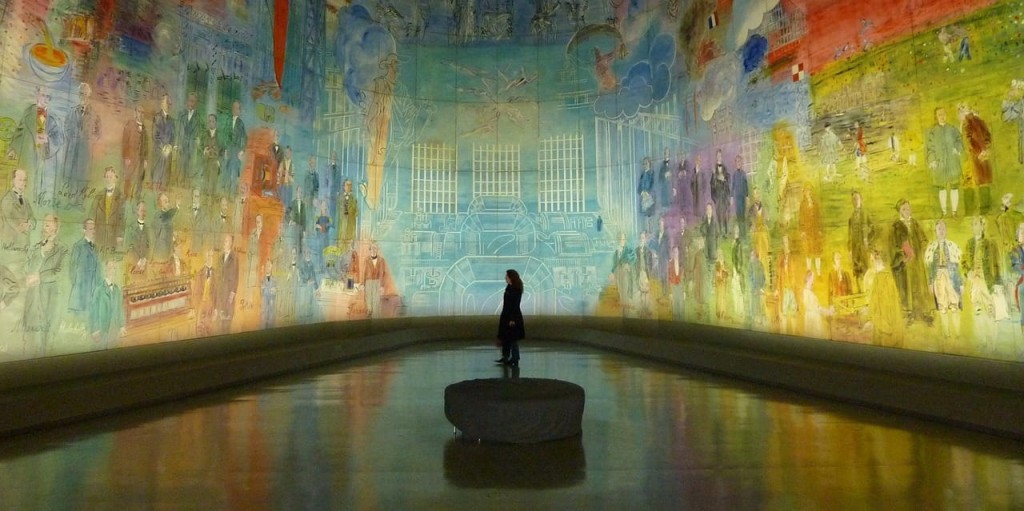
Art essay topic choice
Like every other essay, there are general tips that should be considered when coming up with an art essay writing topic.
- The type of art: this may include a painting, a sculpture or just a simple hand diagram. The type of art is important as it sets out what you are supposed to write about.
- What intrigues you about the art: this is the most important part of the essay. The whole art essay is based on what you want others to know about the piece of art.
- Personal interests: what you, as a writer, love is very important as it narrows down the topic. It is easier to write on topics that are well-known to you.
There are a number of art essay writing topics to choose from.
Below is a list of topics for an art essay
- Differences between Picasso’s concepts and Matisse’s
- The history of art in the Netherlands
- Differences between Bernini and Borromini
- The inspiration behind famous painting
- The Mona Lisa
- Leonardo Da Vinci
- Ancient Roman structures
- The sculptures of nude women
- Impressionism era of art in Netherlands
- The graphics of modern day art
- Insinuations behind ‘The Thinker’
- The Pieta of Michelangelo
- The contribution of Vincent Van Gogh and Piet Mondrian
- Flemish Baroque in the 17th century.
The above are some of the good topics for an art essay.
Structure of an art essay
The art essay topics determine the kind of structure to build on. However, most have a standard art essay structure.
Sample of art essay outline
Introduction.
The Mona Lisa is one of the most known paintings in the world. This is the painting of Lisa Gherardini, the wife of Francesco Del Giocondo, believed to have been painted in the 16th century. It is the work of Leonardo da Vinci and it was purchased by King Francis I. The Mona Lisa is currently under the ownership of the French government.
Thesis statement
The Mona Lisa has had a great impact towards the contribution of art in France:
(i) It is one of the most famous paintings in the world. The Mona Lisa is the painting that everyone wants to see. It is so precious that only a copy of it is actually showcased in the museum.
(ii) It has led to the growth of art. The Mona Lisa has inspired artists all over France. There has been a rise of many artists including Camille Pissarro, a painter, and Etienne-Jules Marey, a photographer.
It is clear that the Mona Lisa is the soft spot in France. The French take pride in it and have used it to improve their lives. Besides its contribution to art, it has also placed France among the leading countries that celebrate art. This has therefore created a culture of being drawn to art and it is reflected in their way of life.
The above is a sample of outline for an art essay.
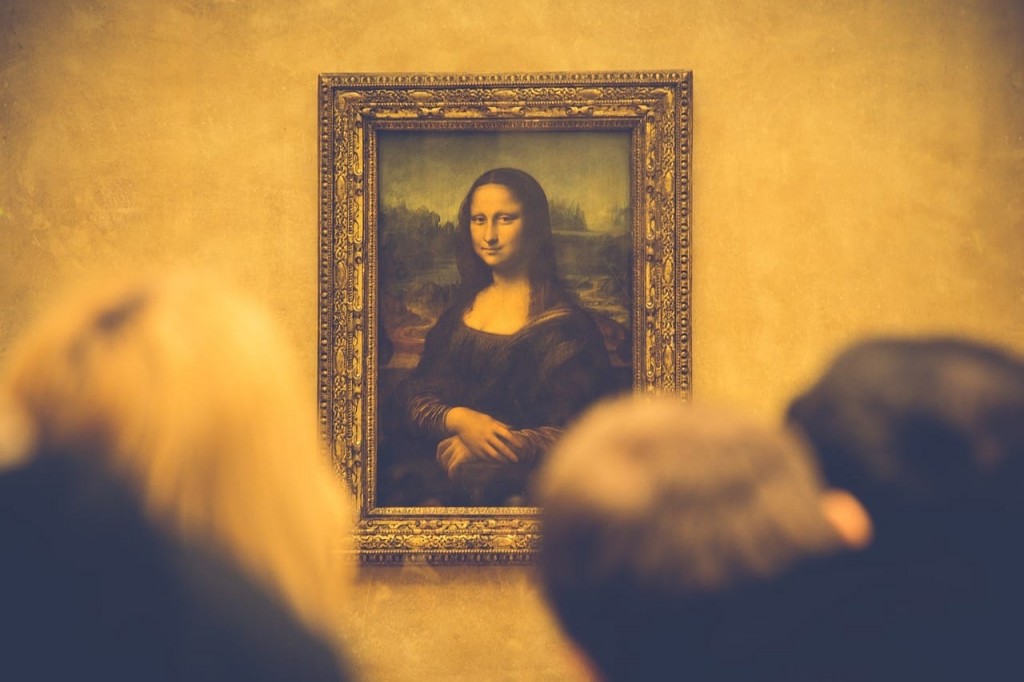
Arts essay tips on writing the introduction
An art essay introduction identifies the art and the artist. Art is diverse, as it could be sculptures, architecture, performing arts or paintings in it. This is where you state why you chose that topic. It also contains a history of the said art and brief details, like who the artist is, the year, the location, etc.
The introduction for an art essay states the thesis. It may be a general statement about the art or a specific aspect of it.
Tips on thesis writing
The thesis statement should be simple and easy to write about. Too complex statements tend to be confusing.
- Pick a statement that is closer to your understanding.
- Ensure it is as simple as possible.
- To avoid irrelevancy, one can have an art essay draft that they can build on.
Tips on the body (transitions, paragraphs, and length)
This is the main part of the essay where you derive analysis based on your point of view. Describe why the art is so appealing to you. Ensure that your defense covers an angle that has not already been covered for uniqueness. For example, one can focus only on the strokes of a portrait. However, ensure that what you describe is relevant to the thesis of your art essay topics.
The essay should not be too long. The sentence construction should also be well done. For this reason, it is advisable to have your points arranged into paragraphs. Ensure that each paragraph is independent and speaks volumes. This ensures that the art essay hooks the reader.
The transition from one paragraph to the next should also be smooth. Using cliché transitions makes the essay boring; therefore, you need to be creative.
Tips on conclusion writing
In an art essay conclusion, one needs to state their opinion. What you think the artists` feelings were and why they decided to paint it the way they did. At this point, you can state the events that contributed to the artist coming up with that art. The conclusion for an art essay requires a lot of research into the background of both the art and the artist(s). For this reason, the references and sources of the information should be cited.
Advice for writers
In art essay writing it is important to first do your research. Art is so diverse and this can be sometimes confusing. The topic to write on should be related to your interests, for example, as a musician, you would find it easier to write about performing arts and music. Besides this, do not plagiarize any work done. Cite and state all sources, making sure that you observe all rules of patent and copyrights.
For you to be a good writer, these art essay tips will be very helpful. The best writer is the one who admits to being in a need of help. The art essay writing guide can also be used to find more about art essay writing steps. Different sources could give different art essay outlines so you need to be careful.
Finalizing the essay
After writing the art essay, it is important to have a clean essay. This calls for proofreading and editing. Proofreading ensures that you do not have any grammatical errors, the art essay outlining is as required, your sentence construction is good and the language used is the required one. Some sites offer art essay writing guide for use when one gets stuck. Proofreading also ensures that the art essay structure is followed. After this is done, ensure that the format used is correct whether APA, MLA or Chicago.

Visual Analysis: How to Analyze a Painting and Write an Essay

A visual analysis essay is an entry-level essay sometimes taught in high school and early university courses. Both communications and art history students use visual analysis to understand art and other visual messages. In our article, we will define the term and give an in-depth guide on how to look at a piece of art and write a visual analysis essay. Stay tuned until the end for a handy visual analysis essay example from our graduate paper writing service .
What Is Visual Analysis?
Visual analysis is essential in studying Communication, English, and Art History. It's a fundamental part of writing about art found in scholarly books, art magazines, and even undergraduate essays. You might encounter a visual analysis as a standalone assignment or as part of a larger research paper.
When you do this type of assignment, you're examining the basic elements of an artwork. These include things like its colors, lines, textures, and size. But it goes beyond just describing these elements. A good analysis also considers the historical context in which the artwork was created and tries to understand what it might mean to different people.
It also encourages you to look closely at details and think deeply about what an artwork is trying to say. This kind of analysis makes you appreciate art more and teaches you how to explain your ideas clearly based on what you see in the artwork.
What is the Purpose of Visual Analysis?
The purpose of a visual analysis is to recognize and understand the visual choices the artist made in creating the artwork. By looking closely at different elements, analysts can learn a lot about how an artwork was made and why the artist made certain choices.
For example, studying how colors are used or how things are arranged in the artwork can reveal its themes or the emotions it's trying to convey. Also, understanding the time period when the artwork was created helps us see how societal changes and cultural ideas influenced its creation and how people reacted to it.
If you don’t feel confident working on your task alone, leave us a request - ' write my paper for me ' and we'll handle it for you professionally.
Another Visual Analysis Paper Looming?
Don't stress! Send your requirements and breathe easy – our writing experts are here to help.
How to Write a Visual Analysis Step-by-Step
To create an insightful visual analysis, you should not only examine the artwork in detail but also situate it within a broader cultural and historical framework. This process can be broken down into three main steps:
- Identifying, describing, and analyzing the visual material
- Situating the visual material in its context
- Interpreting and responding to the content of the visual material.
Let’s discuss each of these steps in more detail.
Step 1: Identify, Describe, and Analyze the Visual Material
Begin by clearly identifying the visual material you will analyze. This could be a painting, photograph, sculpture, advertisement, or any other visual artwork. Provide essential information such as the title, artist, date, and medium.
Next, offer a detailed description of the visual material. Focus on the key elements and principles of design, such as:
- Composition
Describe what you see without interpreting its meaning yet. For instance, note the use of bright colors, the placement of objects, the presence of figures, and the overall layout. This descriptive part forms the foundation of your analysis, allowing your reader to visualize the artwork.
Afterward, consider how the artist uses elements like contrast, balance, emphasis, movement, and harmony. Analyze the techniques and methods used and how they contribute to the overall effect of the piece.
Step 2: Situate the Visual Material in its Context
To fully understand a piece of visual material, you need to consider its historical and cultural context. Start by researching the time period when the artwork was created. Look at the social, political, and economic conditions of that time, and see if there were any cultural movements that might have influenced the artwork.
Next, learn about the artist and their reasons for creating the visual material. Find out about the artist's life, other works they have made, and any statements they have made about this piece. Knowing the artist’s background can give you valuable insights into the artwork's purpose and message.
Finally, think about how the visual material was received by people when it was first shown and how it has impacted others over time. Look for reviews and public reactions, and see if it influenced other works or movements. This will help you understand the significance of the visual material in the larger cultural and artistic context.
Step 3: Interpret and Respond to the Content of the Visual Material
Now, combine your description, analysis, and understanding of the context to interpret what the visual material means. Talk about the themes, symbols, and messages the artwork conveys. Think about what it reveals about human experiences, society, or specific issues. Use evidence from earlier steps to support your interpretation.
Afterward, consider your own reaction to the visual material. How does it personally resonate with you? What emotions or thoughts does it provoke? Your personal response adds a subjective aspect to your analysis, making it more relatable.
Finally, summarize your findings and emphasize the importance of the visual material. Highlight key aspects from your identification, description, analysis, context, and interpretation. Then, it concludes by reinforcing the impact and significance of the visual material in both its original setting and its enduring influence.
Who Does Formal Analysis of Art
Most people who face visual analysis essays are Communication, English, and Art History students. Communications students explore mediums such as theater, print media, news, films, photos — basically anything. Comm is basically a giant, all-encompassing major where visual analysis is synonymous with Tuesday.
Art History students study the world of art to understand how it developed. They do visual analysis with every painting they look it at and discuss it in class.
English Literature students perform visual analysis too. Every writer paints an image in the head of their reader. This image, like a painting, can be clear, or purposefully unclear. It can be factual, to the point, or emotional and abstract like Ulysses, challenging you to search your emotions rather than facts and realities.
6 Questions to Answer Before Analyzing a Piece of Art
According to our experienced term paper writer , there are six important questions to ask before you start analyzing a piece of art. Answering these questions can make writing your analysis much easier:
- Who is the artist, and what type of art do they create? - To place the artwork in context, you should identify the artist and understand the type of art they create.
- What was the artist's goal in creating this painting? - Determine why the artist created the artwork. Was it to convey a message, evoke emotions, or explore a theme?
- When and where was this artwork made? - Knowing the time and place of creation helps understand the cultural and historical influences on the artwork.
- What is the main focus or theme of this artwork? - Identify what the artwork is about. This could be a person, place, object, or abstract concept.
- Who was the artwork created for? - To provide insight into its style and content, consider who the artist intended to reach with their work.
- What historical events or cultural factors influenced this painting? - Understanding the historical background can reveal more about the significance and meaning of the artwork.
Count on the support of the professional writers of our essay writing service .
Elements of the Visual Analysis
To fully grasp formal analysis, it's important to differentiate between the elements and principles of visual analysis. The elements are the basic building blocks used to create a piece of art. These include:
| Art Element 🎨 | Description 📝 |
|---|---|
| ✏️Line | A mark with length and direction, which can define shapes, create textures, and suggest movement. |
| 🌗Value | The lightness or darkness of a color, which helps to create depth and contrast. |
| 🔶Shapes | Two-dimensional areas with a defined boundary, such as circles, squares, and triangles. |
| 🔲Forms | Three-dimensional objects with volume and thickness, like cubes, spheres, and cylinders. |
| 🌌Space | The area around, between, and within objects, which can be used to create the illusion of depth. |
| 🌈Color | The hues, saturation, and brightness in artwork, used to create mood and visual interest. |
| 🖐️Texture | The surface quality of an object, which can be actual (how it feels) or implied (how it looks like it feels). |
Principles of the Visual Analysis
The principles, on the other hand, are how these elements are combined and used together to create the overall effect of the artwork. These principles include:
| Principle of Art 🎨 | Description 📝 |
|---|---|
| ⚖️Balance | The distribution of visual weight in a composition, which can be symmetrical or asymmetrical. |
| 🌗Contrast | The difference between elements, such as light and dark, to create visual interest. |
| 🏃♂️Movement | The suggestion or illusion of motion in an artwork, guiding the viewer’s eye through the piece. |
| 🎯Emphasis | The creation of a focal point to draw attention to a particular area or element. |
| 🔄Pattern | The repetition of elements to create a sense of rhythm and consistency. |
| 📏Proportion | The relationship in size between different parts of an artwork, contributing to its harmony. |
| 🔗Unity | The sense of cohesiveness in an artwork, where all elements and principles work together effectively. |
Visual Analysis Outline
It’s safe to use the five-paragraph essay structure for your visual analysis essay. If you are looking at a painting, take the most important aspects of it that stand out to you and discuss them in relation to your thesis.
.png)
In the introduction, you should:
- Introduce the Artwork : Mention the title, artist, date, and medium of the artwork.
- Provide a Brief Description : Offer a general overview of what the artwork depicts.
- State the Purpose : Explain the goal of your analysis and what aspects you will focus on.
- Thesis Statement : Present a clear thesis statement that outlines your main argument or interpretation of the artwork.
The body of the visual analysis is where you break down the visual material into its component parts and examine each one in detail. This section should be structured logically, with each paragraph focusing on a specific element or aspect of the visual material.
- Description: Start with a detailed description of the visual material. Describe what you see without interpreting or analyzing it yet. Mention elements such as color, line, shape, texture, space, and composition. For instance, if analyzing a painting, describe the subject matter, the arrangement of figures, the use of light and shadow, etc.
- Analysis of Visual Elements: Analyze how each visual element contributes to the overall effect of the material. Discuss the use of color (e.g., warm or cool tones, contrasts, harmonies), the role of lines (e.g., leading lines, contours), the shapes (e.g., geometric, organic), and the texture (e.g., smooth, rough). Consider how these elements work together to create a certain mood or message.
- Contextual Analysis: Examine how the context in which the visual material was created and is being viewed influences its interpretation. This includes historical, cultural, social, and political factors. Discuss how these contextual elements impact the meaning and reception of the visual material.
- Interpretation: Discuss your interpretation of the visual material. Explain how the visual elements and contextual factors contribute to the meaning you derive from it. Support your interpretation with specific examples from the material.
- Comparative Analysis (if applicable): If relevant, compare the visual material with other works by the same creator or with similar works by different creators. Highlight similarities and differences in style, technique, and thematic content.
The conclusion of a visual analysis essay summarizes the main points of the analysis and restates the thesis in light of the evidence presented.
- Restate Thesis: Reiterate your thesis statement in a way that reflects the depth of your analysis. Show how your understanding of the visual material has been supported by your detailed examination.
- Summary of Main Points: Summarize the key points of your analysis. Highlight the most important findings and insights.
- Implications: Discuss the broader implications of your analysis. What does your analysis reveal about the visual material? How does it contribute to our understanding of the creator's work, the time period, or the cultural context?
- Closing Thought: End with a final thought that leaves a lasting impression on the reader. This could be a reflection on the significance of the visual material, a question for further consideration, or a statement about its impact on you or on a broader audience.
If you want a more in-depth look at the classic essay structure, feel free to visit our 5 PARAGRAPH ESSAY blog.
Visual Analysis Example
In this section, we've laid out two examples of visual analysis essays to show you how it's done effectively. Get inspired and learn from them!
Key Takeaways
Visual analysis essays are fundamental early in your communications and art history studies. Learning how to formally break down art is key, whether you're pursuing a career in art or communications.
Before jumping into analysis, get a solid grasp of the painter's background and life. Analyzing a painting isn't just for fun, as you need to pay attention to the small details the painter might have hidden. Knowing how to do this kind of assignment not only helps you appreciate art more but also lets you deeply understand the media messages you encounter every day.
If you enjoyed this article and found it insightful, make sure to also check out the summary of Lord of the Flies and an article on Beowulf characters .
If you read the whole article and still have no idea how to start your visual analysis essay, let a professional writer do this job for you. Contact us, and we’ll write your work for a higher grade you deserve. All college essay service requests are processed fast.
Paper Panic?
Our expert academics can help you break through that writer's block and craft a paper you can be proud of.
What are the 4 Steps of Visual Analysis?
How to write a formal visual analysis, what is the function of visual analysis.

is an expert in nursing and healthcare, with a strong background in history, law, and literature. Holding advanced degrees in nursing and public health, his analytical approach and comprehensive knowledge help students navigate complex topics. On EssayPro blog, Adam provides insightful articles on everything from historical analysis to the intricacies of healthcare policies. In his downtime, he enjoys historical documentaries and volunteering at local clinics.

- Added new sections
- Added new writing steps
- Added a new example
- Updated an outline
- Duke University. (n.d.). Visual Analysis . https://twp.duke.edu/sites/twp.duke.edu/files/file-attachments/visual-analysis.original.pdf
- Glatstein, J. (2019, December 9). Formal Visual Analysis: The Elements & Principles of Composition . Www.kennedy-Center.org. https://www.kennedy-center.org/education/resources-for-educators/classroom-resources/articles-and-how-tos/articles/educators/visual-arts/formal-visual-analysis-the-elements-and-principles-of-compositoin/
- MADA: Visual analysis . (n.d.). Student Academic Success. https://www.monash.edu/student-academic-success/excel-at-writing/annotated-assessment-samples/art-design-and-architecture/mada-visual-analysis
%20(1).webp)
How to analyze an artwork: a step-by-step guide
Last Updated on August 16, 2023
This article has been written for high school art students who are working upon a critical study of art, sketchbook annotation or an essay-based artist study. It contains a list of questions to guide students through the process of analyzing visual material of any kind, including drawing, painting, mixed media, graphic design, sculpture, printmaking, architecture, photography, textiles, fashion and so on (the word ‘artwork’ in this article is all-encompassing). The questions include a wide range of specialist art terms, prompting students to use subject-specific vocabulary in their responses. It combines advice from art analysis textbooks as well as from high school art teachers who have first-hand experience teaching these concepts to students.
COPYRIGHT NOTE: This material is available as a printable art analysis PDF handout . This may be used free of charge in a classroom situation. To share this material with others, please use the social media buttons at the bottom of this page. Copying, sharing, uploading or distributing this article (or the PDF) in any other way is not permitted.
READ NEXT: How to make an artist website (and why you need one)
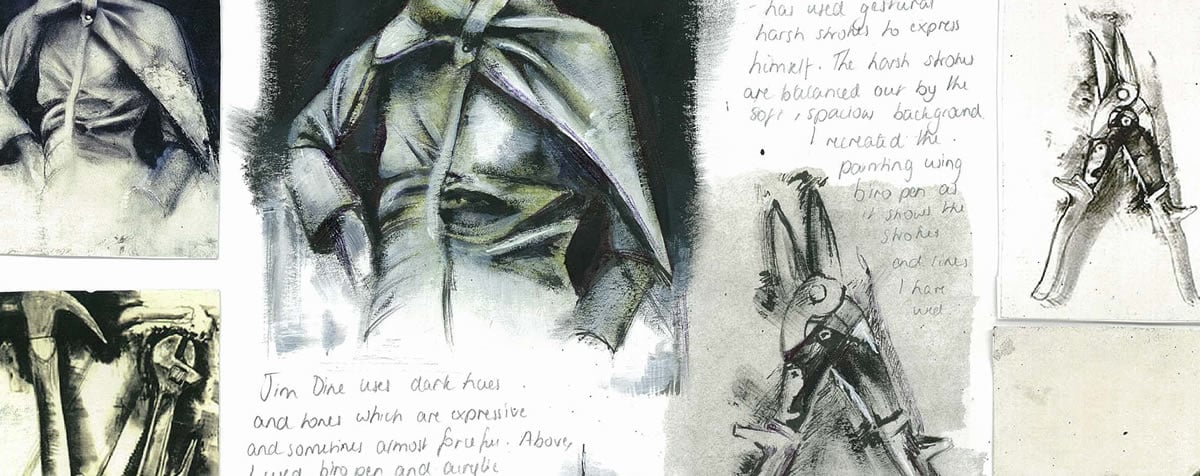
Why do we study art?
Almost all high school art students carry out critical analysis of artist work, in conjunction with creating practical work. Looking critically at the work of others allows students to understand compositional devices and then explore these in their own art. This is one of the best ways for students to learn.
Instructors who assign formal analyses want you to look—and look carefully. Think of the object as a series of decisions that an artist made. Your job is to figure out and describe, explain, and interpret those decisions and why the artist may have made them. – The Writing Center, University of North Carolina at Chapel Hill 10
Art analysis tips
- ‘I like this’ or ‘I don’t like this’ without any further explanation or justification is not analysis . Personal opinions must be supported with explanation, evidence or justification.
- ‘Analysis of artwork’ does not mean ‘description of artwork’ . To gain high marks, students must move beyond stating the obvious and add perceptive, personal insight. Students should demonstrate higher order thinking – the ability to analyse, evaluate and synthesize information and ideas. For example, if color has been used to create strong contrasts in certain areas of an artwork, students might follow this observation with a thoughtful assumption about why this is the case – perhaps a deliberate attempt by the artist to draw attention to a focal point, helping to convey thematic ideas.
Although description is an important part of a formal analysis, description is not enough on its own. You must introduce and contextualize your descriptions of the formal elements of the work so the reader understands how each element influences the work’s overall effect on the viewer. – Sylvan Barnet, A Short Guide to Writing About Art 2
- Cover a range of different visual elements and design principles . It is common for students to become experts at writing about one or two elements of composition, while neglecting everything else – for example, only focusing upon the use of color in every artwork studied. This results in a narrow, repetitive and incomplete analysis of the artwork. Students should ensure that they cover a wide range of art elements and design principles, as well as address context and meaning, where required. The questions below are designed to ensure that students cover a broad range of relevant topics within their analysis.
- Write alongside the artwork discussed . In almost all cases, written analysis should be presented alongside the work discussed, so that it is clear which artwork comments refer to. This makes it easier for examiners to follow and evaluate the writing.
- Support writing with visual analysis . It is almost always helpful for high school students to support written material with sketches, drawings and diagrams that help the student understand and analyse the piece of art. This might include composition sketches; diagrams showing the primary structure of an artwork; detailed enlargements of small sections; experiments imitating use of media or technique; or illustrations overlaid with arrows showing leading lines and so on. Visual investigation of this sort plays an important role in many artist studies.
Making sketches or drawings from works of art is the traditional, centuries-old way that artists have learned from each other. In doing this, you will engage with a work and an artist’s approach even if you previously knew nothing about it. If possible do this whenever you can, not from a postcard, the internet or a picture in a book, but from the actual work itself. This is useful because it forces you to look closely at the work and to consider elements you might not have noticed before. – Susie Hodge, How to Look at Art 7
Finally, when writing about art, students should communicate with clarity; demonstrate subject-specific knowledge; use correct terminology; generate personal responses; and reference all content and ideas sourced from others. This is explained in more detail in our article about high school sketchbooks .
What should students write about?
Although each aspect of composition is treated separately in the questions below, students should consider the relationship between visual elements (line, shape, form, value/tone, color/hue, texture/surface, space) and how these interact to form design principles (such as unity, variety, emphasis, dominance, balance, symmetry, harmony, movement, contrast, rhythm, pattern, scale, proportion) to communicate meaning.
As complex as works of art typically are, there are really only three general categories of statements one can make about them. A statement addresses form, content or context (or their various interrelations). – Dr. Robert J. Belton, Art History: A Preliminary Handbook, The University of British Columbia 5
…a formal analysis – the result of looking closely – is an analysis of the form that the artist produces; that is, an analysis of the work of art, which is made up of such things as line, shape, color, texture, mass, composition. These things give the stone or canvas its form, its expression, its content, its meaning. – Sylvan Barnet, A Short Guide to Writing About Art 2
This video by Dr. Beth Harris, Dr. Steven Zucker and Dr. Naraelle Hohensee provides an excellent example of how to analyse a piece of art (it is important to note that this video is an example of ‘formal analysis’ and doesn’t include contextual analysis, which is also required by many high school art examination boards, in addition to the formal analysis illustrated here):
Composition analysis: a list of questions
The questions below are designed to facilitate direct engagement with an artwork and to encourage a breadth and depth of understanding of the artwork studied. They are intended to prompt higher order thinking and to help students arrive at well-reasoned analysis.
It is not expected that students answer every question (doing so would result in responses that are excessively long, repetitious or formulaic); rather, students should focus upon areas that are most helpful and relevant for the artwork studied (for example, some questions are appropriate for analyzing a painting, but not a sculpture). The words provided as examples are intended to help students think about appropriate vocabulary to use when discussing a particular topic. Definitions of more complex words have been provided.
Students should not attempt to copy out questions and then answer them; rather the questions should be considered a starting point for writing bullet pointed annotation or sentences in paragraph form.
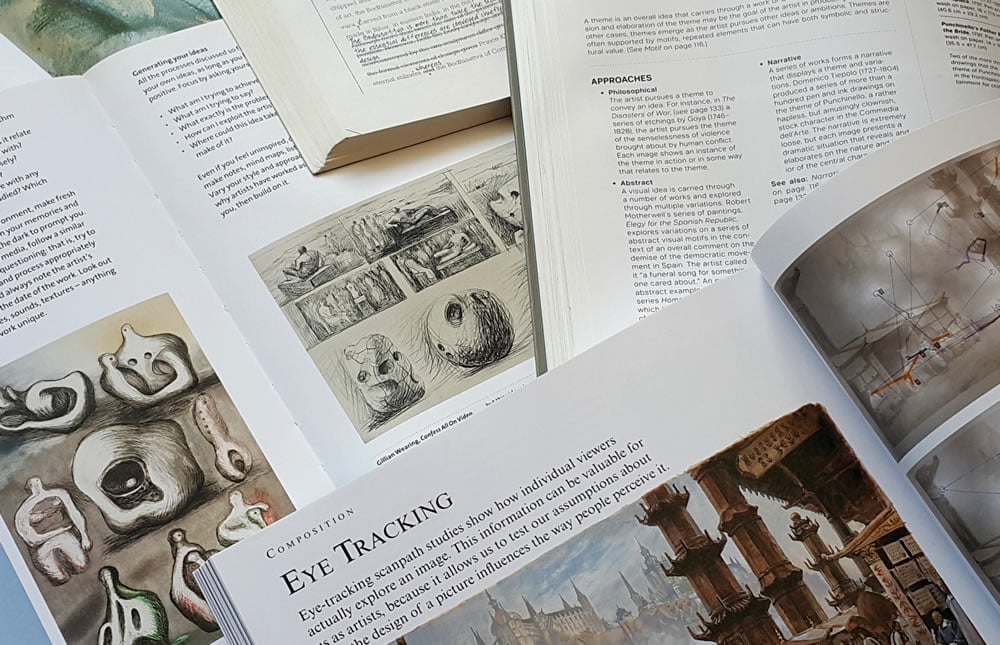
CONTENT, CONTEXT AND MEANING
Subject matter / themes / issues / narratives / stories / ideas.
There can be different, competing, and contradictory interpretations of the same artwork. An artwork is not necessarily about what the artist wanted it to be about. – Terry Barrett, Criticizing Art: Understanding the Contemporary 6
Our interest in the painting grows only when we forget its title and take an interest in the things that it does not mention…” – Françoise Barbe-Gall, How to Look at a Painting 8
- Does the artwork fall within an established genre (i.e. historical; mythical; religious; portraiture; landscape; still life; fantasy; architectural)?
- Are there any recognisable objects, places or scenes ? How are these presented (i.e. idealized; realistic; indistinct; hidden; distorted; exaggerated; stylized; reflected; reduced to simplified/minimalist form; primitive; abstracted; concealed; suggested; blurred or focused)?
- Have people been included? What can we tell about them (i.e. identity; age; attire; profession; cultural connections; health; family relationships; wealth; mood/expression)? What can we learn from their pose (i.e. frontal; profile; partly turned; body language)? Where are they looking (i.e. direct eye contact with viewer; downcast; interested in other subjects within the artwork)? Can we work out relationships between figures from the way they are posed?
What do the clothing, furnishings, accessories (horses, swords, dogs, clocks, business ledgers and so forth), background, angle of the head or posture of the head and body, direction of the gaze, and facial expression contribute to our sense of the figure’s social identity (monarch, clergyman, trophy wife) and personality (intense, cool, inviting)? – Sylvan Barnet, A Short Guide to Writing About Art 2
- What props and important details are included (drapery; costumes; adornment; architectural elements; emblems; logos; motifs)? How do aspects of setting support the primary subject? What is the effect of including these items within the arrangement (visual unity; connections between different parts of the artwork; directs attention; surprise; variety and visual interest; separates / divides / borders; transformation from one object to another; unexpected juxtaposition)?
If a waiter served you a whole fish and a scoop of chocolate ice cream on the same plate, your surprise might be caused by the juxtaposition , or the side-by-side contrast, of the two foods. – Vocabulary.com
A motif is an element in a composition or design that can be used repeatedly for decorative, structural, or iconographic purposes. A motif can be representational or abstract, and it can be endowed with symbolic meaning. Motifs can be repeated in multiple artworks and often recur throughout the life’s work of an individual artist. – John A. Parks, Universal Principles of Art 11
- Does the artwork communicate an action, narrative or story (i.e. historical event or illustrate a scene from a story)? Has the arrangement been embellished, set up or contrived?
- Does the artwork explore movement ? Do you gain a sense that parts of the artwork are about to change, topple or fall (i.e. tension; suspense)? Does the artwork capture objects in motion (i.e. multiple or sequential images; blurred edges; scene frozen mid-action; live performance art; video art; kinetic art)?
- What kind of abstract elements are shown (i.e. bars; shapes; splashes; lines)? Have these been derived from or inspired by realistic forms? Are they the result of spontaneous, accidental creation or careful, deliberate arrangement?
- Does the work include the appropriation of work by other artists, such as within a parody or pop art? What effect does this have (i.e. copyright concerns)?
Parody: mimicking the appearance and/or manner of something or someone, but with a twist for comic effect or critical comment, as in Saturday Night Live’s political satires – Dr. Robert J. Belton, Art History: A Preliminary Handbook, The University of British Columbia 5
- Does the subject captivate an instinctual response , such as items that are informative, shocking or threatening for humans (i.e. dangerous places; abnormally positioned items; human faces; the gaze of people; motion; text)? Heap map tracking has demonstrated that these elements catch our attention, regardless of where they are positioned – James Gurney writes more about this fascinating topic .
- What kind of text has been used (i.e. font size; font weight; font family; stenciled; hand-drawn; computer-generated; printed)? What has influenced this choice of text?
- Do key objects or images have symbolic value or provide a cue to meaning ? How does the artwork convey deeper, conceptual themes (i.e. allegory; iconographic elements; signs; metaphor; irony)?
Allegory is a device whereby abstract ideas can be communicated using images of the concrete world. Elements, whether figures or objects, in a painting or sculpture are endowed with symbolic meaning. Their relationships and interactions combine to create more complex meanings. – John A. Parks, Universal Principles of Art 11
An iconography is a particular range or system of types of image used by an artist or artists to convey particular meanings. For example in Christian religious painting there is an iconography of images such as the lamb which represents Christ, or the dove which represents the Holy Spirit. – Tate.org.uk
- What tone of voice does the artwork have (i.e. deliberate; honest; autobiographical; obvious; direct; unflinching; confronting; subtle; ambiguous; uncertain; satirical; propagandistic)?
- What is your emotional response to the artwork? What is the overall mood (i.e positive; energetic; excitement; serious; sedate; peaceful; calm; melancholic; tense; uneasy; uplifting; foreboding; calm; turbulent)? Which subject matter choices help to communicate this mood (i.e. weather and lighting conditions; color of objects and scenes)?
- Does the title change the way you interpret the work?
- Were there any design constraints relating to the subject matter or theme/s (i.e. a sculpture commissioned to represent a specific subject, place or idea)?
- Are there thematic connections with your own project? What can you learn from the way the artist has approached this subject?
Wider contexts
All art is in part about the world in which it emerged. – Terry Barrett, Criticizing Art: Understanding the Contemporary 6
- Supported by research, can you identify when, where and why the work was created and its original intention or purpose (i.e. private sale; commissioned for a specific owner; commemorative; educational; promotional; illustrative; decorative; confrontational; useful or practical utility; communication; created in response to a design brief; private viewing; public viewing)? In what way has this background influenced the outcome (i.e. availability of tools, materials or time; expectations of the patron / audience)?
- Where is the place of construction or design site and how does this influence the artwork (i.e. reflects local traditions, craftsmanship, or customs; complements surrounding designs; designed to accommodate weather conditions / climate; built on historic site)? Was the artwork originally located somewhere different?
- Which events and surrounding environments have influenced this work (i.e. natural events; social movements such as feminism; political events, economic situations, historic events, religious settings, cultural events)? What effect did these have?
- Is the work characteristic of an artistic style, movement or time period ? Has it been influenced by trends, fashions or ideologies ? How can you tell?
- Can you make any relevant connections or comparisons with other artworks ? Have other artists explored a similar subject in a similar way? Did this occur before or after this artwork was created?
- Can you make any relevant connections to other fields of study or expression (i.e. geography, mathematics, literature, film, music, history or science)?
- Which key biographical details about the artist are relevant in understanding this artwork (upbringing and personal situation; family and relationships; psychological state; health and fitness; socioeconomic status; employment; ethnicity; culture; gender; education, religion; interests, attitudes, values and beliefs)?
- Is this artwork part of a larger body of work ? Is this typical of the work the artist is known for?
- How might your own upbringing, beliefs and biases distort your interpretation of the artwork? Does your own response differ from the public response, that of the original audience and/or interpretation by critics ?
- How do these wider contexts compare to the contexts surrounding your own work?
COMPOSITION AND FORMAT
- What is the overall size, shape and orientation of the artwork (i.e. vertical, horizontal, portrait, landscape or square)? Has this format been influenced by practical considerations (i.e. availability of materials; display constraints ; design brief restrictions; screen sizes; common aspect ratios in film or photography such as 4:3 or 2:3; or paper sizes such as A4, A3, A2, A1)?
- How do images fit within the frame (cropped; truncated; shown in full)? Why is this format appropriate for the subject matter?
- Are different parts of the artwork physically separate, such as within a diptych or triptych ?
- Where are the boundaries of the artwork (i.e. is the artwork self-contained; compact; intersecting; sprawling)?
- Is the artwork site-specific or designed to be displayed across multiple locations or environments?
- Does the artwork have a fixed, permanent format, or was it modified, moved or adjusted over time ? What causes such changes (i.e. weather and exposure to the elements – melting, erosion, discoloration, decaying, wind movement, surface abrasion; structural failure – cracking, breaking; damage caused by unpredictable events, such as fire or vandalism; intentional movement, such as rotation or sensor response; intentional impermanence, such as an installation assembled for an exhibition and removed afterwards; viewer interaction; additions, renovations and restoration by subsequent artists or users; a project so expansive it takes years to construct)? How does this change affect the artwork? Are there stylistic variances between parts?
- Is the artwork viewed from one angle or position, or are dynamic viewpoints and serial vision involved? (Read more about Gordon Cullen’s concept of serial vision here ).
- How does the scale and format of the artwork relate to the environment where it is positioned, used, installed or hung (i.e. harmonious with landscape typography; sensitive to adjacent structures; imposing or dwarfed by surroundings; human scale)? Is the artwork designed to be viewed from one vantage point (i.e. front facing; viewed from below; approached from a main entrance; set at human eye level) or many? Are images taken from the best angle?
- Would a similar format benefit your own project? Why / why not?
Structure / layout
- Has the artwork been organised using a formal system of arrangement or mathematical proportion (i.e. rule of thirds; golden ratio or spiral; grid format; geometric; dominant triangle; or circular composition) or is the arrangement less predictable (i.e. chaotic, random, accidental, fragmented, meandering, scattered; irregular or spontaneous)? How does this system of arrangement help with the communication of ideas? Can you draw a diagram to show the basic structure of the artwork?
- Can you see a clear intention with alignment and positioning of parts within the artwork (i.e. edges aligned; items spaced equally; simple or complex arrangement; overlapping, clustered or concentrated objects; dispersed, separate items; repetition of forms; items extending beyond the frame; frames within frames; bordered perimeter or patterned edging; broken borders)? What effect do these visual devices have (i.e. imply hierarchy; help the viewer understand relationships between parts of artwork; create rhythm)?
- Does the artwork have a primary axis of symmetry (vertical, diagonal, horizontal)? Can you locate a center of balance? Is the artwork symmetrical, asymmetrical (i.e. stable), radial, or intentionally unbalanced (i.e. to create tension or unease)?
- Can you draw a diagram to illustrate emphasis and dominance (i.e. ‘blocking in’ mass, where the ‘heavier’ dominant forms appear in the composition)? Where are dominant items located within the frame?
- How do your eyes move through the composition?
- Could your own artwork use a similar organisational structure?
- What types of linear mark-making are shown (thick; thin; short; long; soft; bold; delicate; feathery; indistinct; faint; irregular; intermittent; freehand; ruled; mechanical; expressive; loose; blurred; dashing; cross-hatching; meandering; gestural, fluid; flowing; jagged; spiky; sharp)? What atmosphere, moods, emotions or ideas do these evoke?
- Are there any interrupted, suggested or implied lines (i.e. lines that can’t literally be seen, but the viewer’s brain connects the dots between separate elements)?
- Repeating lines : may simulate material qualities, texture, pattern or rhythm;
- Boundary lines : may segment, divide or separate different areas;
- Leading lines : may manipulate the viewer’s gaze, directing vision or lead the eye to focal points ( eye tracking studies indicate that our eyes leap from one point of interest to another, rather than move smoothly or predictably along leading lines 9 . Lines may nonetheless help to establish emphasis by ‘pointing’ towards certain items );
- Parallel lines : may create a sense of depth or movement through space within a landscape;
- Horizontal lines : may create a sense of stability and permanence;
- Vertical lines : may suggest height, reaching upwards or falling;
- Intersecting perpendicular lines : may suggest rigidity, strength;
- Abstract lines : may balance the composition, create contrast or emphasis;
- Angular / diagonal lines : may suggest tension or unease;
- Chaotic lines : may suggest a sense of agitation or panic;
- Underdrawing, construction lines or contour lines : describe form ( learn more about contour lines in our article about line drawing );
- Curving / organic lines : may suggest nature, peace, movement or energy.
- What is the relationship between line and three-dimensional form? Are outlines used to define form and edges?
- Would it be appropriate to use line in a similar way within your own artwork?
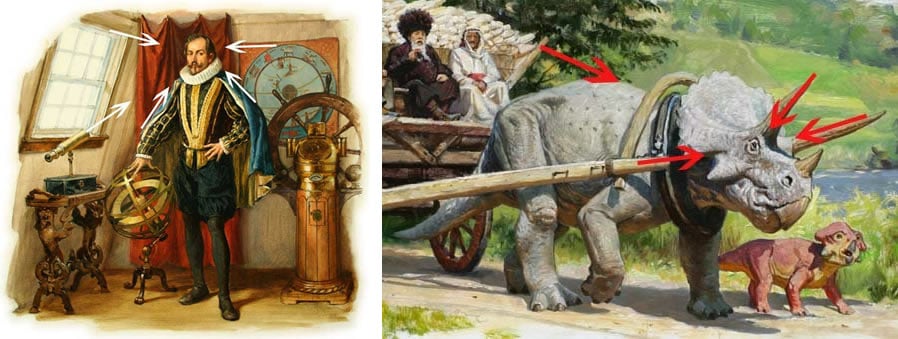
Shape and form
- Can you identify a dominant visual language within the shapes and forms shown (i.e. geometric; angular; rectilinear; curvilinear; organic; natural; fragmented; distorted; free-flowing; varied; irregular; complex; minimal)? Why is this visual language appropriate?
- How are the edges of forms treated (i.e. do they fade away or blur at the edges, as if melting into the page; ripped or torn; distinct and hard-edged; or, in the words of James Gurney, 9 do they ‘dissolve into sketchy lines, paint strokes or drips’)?
- Are there any three-dimensional forms or relief elements within the artwork, such as carved pieces, protruding or sculptural elements? How does this affect the viewing of the work from different angles?
- Is there a variety or repetition of shapes/forms? What effect does this have (i.e. repetition may reinforce ideas, balance composition and/or create harmony / visual unity; variety may create visual interest or overwhelm the viewer with chaos)?
- How are shapes organised in relation to each other, or with the frame of the artwork (i.e. grouped; overlapping; repeated; echoed; fused edges; touching at tangents; contrasts in scale or size; distracting or awkward junctions)?
- Are silhouettes (external edges of objects) considered?
All shapes have silhouettes, and vision research has shown that one of the first tasks of perception is to be able to sort out the silhouette shapes of each of the elements in a scene. – James Gurney, Imaginative Realism 9
- Are forms designed with ergonomics and human scale in mind?
Ergonomics: an applied science concerned with designing and arranging things people use so that the people and things interact most efficiently and safely – Merriam-webster.com
- Can you identify which forms are functional or structural , versus ornamental or decorative ?
- Have any forms been disassembled, ‘cut away’ or exposed , such as a sectional drawing? What is the purpose of this (i.e. to explain construction methods; communicate information; dramatic effect)?
- Would it be appropriate to use shape and form in a similar way within your own artwork?
Value / tone / light
- Has a wide tonal range been used in the artwork (i.e. a broad range of darks, highlights and mid-tones) or is the tonal range limited (i.e. pale and faint; subdued; dull; brooding and dark overall; strong highlights and shadows, with little mid-tone values)? What is the effect of this?
- Where are the light sources within the artwork or scene? Is there a single consistent light source or multiple sources of light (sunshine; light bulbs; torches; lamps; luminous surfaces)? What is the effect of these choices (i.e. mimics natural lighting conditions at a certain time of day or night; figures lit from the side to clarify form; contrasting background or spot-lighting used to accentuate a focal area; soft and diffused lighting used to mute contrasts and minimize harsh shadows; dappled lighting to signal sunshine broken by surrounding leaves; chiaroscuro used to exaggerate theatrical drama and impact; areas cloaked in darkness to minimize visual complexity; to enhance our understanding of narrative, mood or meaning)?
One of the most important ways in which artists can use light to achieve particular effects is in making strong contrasts between light and dark. This contrast is often described as chiaroscuro . – Matthew Treherne, Analysing Paintings, University of Leeds 3
- Are representations of three-dimensional objects and figures flat or tonally modeled ? How do different tonal values change from one to the next (i.e. gentle, smooth gradations; abrupt tonal bands)?
- Are there any unusual, reflective or transparent surfaces, mediums or materials which reflect or transmit light in a special way?
- Has tone been used to help communicate atmospheric perspective (i.e. paler and bluer as objects get further away)?
- Are gallery or environmental light sources where the artwork is displayed fixed or fluctuating? Does the work appear different when viewed at different times of day? How does this affect your interpretation of the work?
- Are shadows depicted within the artwork? What is the effect of these shadows (i.e. anchors objects to the page; creates the illusion of depth and space; creates dramatic contrasts)?
- Do sculptural protrusions or relief elements catch the light and/or create cast shadows or pockets of shadow upon the artwork? How does this influence the viewer’s experience?
- How has tone been used to help direct the viewer’s attention to focal areas?
- Would it be appropriate to use value / tone in a similar way within your own artwork? Why / why not?
Color / hue
- Can you view the true color of the artwork (i.e. are you viewing a low-quality reproduction or examining the artwork in poor lighting)?
- Which color schemes have been used within the artwork (i.e. harmonious; complementary; primary; monochrome; earthy; warm; cool/cold)? Has the artist used a broad or limited color palette (i.e. variety or unity)? Which colors dominate?
- How would you describe the intensity of the colors (vibrant; bright; vivid; glowing; pure; saturated; strong; dull; muted; pale; subdued; bleached; diluted)?
- Are colors transparent or opaque ? Can you see reflected color?
- Has color contrast been used within the artwork (i.e. extreme contrasts; juxtaposition of complementary colors; garish / clashing / jarring)? Are there any abrupt color changes or unexpected uses of color?
- What is the effect of these color choices (i.e. expressing symbolic or thematic ideas; descriptive or realistic depiction of local color; emphasizing focal areas; creating the illusion of aerial perspective; relationships with colors in surrounding environment; creating balance; creating rhythm/pattern/repetition; unity and variety within the artwork; lack of color places emphasis upon shape, detail and form)? What kind of atmosphere do these colors create?
It is often said that warm colors (red, orange, yellow) come forward and produce a sense of excitement (yellow is said to suggest warmth and happiness, as in the smiley face), whereas cool colors (blue, green) recede and have a calming effect. Experiments, however, have proved inconclusive; the response to color – despite clichés about seeing red or feeling blue – is highly personal, highly cultural, highly varied. – Sylvan Barnet, A Short Guide to Writing About Art 2
- Would it be appropriate to use color in a similar way within your own artwork?
Texture / surface / pattern
- Are there any interesting textural, tactile or surface qualities within the artwork (i.e. bumpy; grooved; indented; scratched; stressed; rough; smooth; shiny; varnished; glassy; glossy; polished; matte; sandy; grainy; gritted; leathery; spiky; silky)? How are these created (i.e. inherent qualities of materials; impasto mediums; sculptural materials; illusions or implied texture , such as cross-hatching; finely detailed and intricate areas; organic patterns such as foliage or small stones; repeating patterns ; ornamentation)?
- How are textural or patterned elements positioned and what effect does this have (i.e. used intermittently to provide variety; repeating pattern creates rhythm ; patterns broken create focal points ; textured areas create visual links and unity between separate areas of the artwork; balance between detailed/textured areas and simpler areas; glossy surface creates a sense of luxury; imitation of texture conveys information about a subject, i.e. softness of fur or strands of hair)?
- Would it be appropriate to use texture / surface in a similar way within your own artwork?
Industrial and architectural landscapes are particularly concerned with the arrangement of geometries and form in space… Dr. Ben Guy, Landscape and Visual Impact Assessment using CGI Digital Twins, Urban CGI 12
- Is the pictorial space shallow or deep? How does the artwork create the illusion of depth (i.e. layering of foreground, middle-ground, background ; overlapping of objects; use of shadows to anchor objects; positioning of items in relationship to the horizon line; linear perspective ( learn more about one point perspective here ); tonal modeling; relationships with adjacent objects and those in close proximity – including the human form – to create a sense of scale ; spatial distortions or optical illusions; manipulating scale of objects to create ‘surrealist’ spaces where true scale is unknown)?
- Has an unusual viewpoint been used (i.e. worm’s view; aerial view, looking out a window or through a doorway; a scene reflected in a mirror or shiny surface; looking through leaves; multiple viewpoints combined)? What is the effect of this viewpoint (i.e. allows certain parts of the scene to be dominant and overpowering or squashed, condensed and foreshortened ; or suggests a narrative between two separate spaces ; provides more information about a space than would normally be seen)?
- Is the emphasis upon mass or void ? How densely arranged are components within the artwork or picture plane? What is the relationship between object and surrounding space (i.e. compact / crowded / busy / densely populated, with little surrounding space; spacious; careful interplay between positive and negative space; objects clustered to create areas of visual interest)? What is the effect of this (i.e. creates a sense of emptiness or isolation; business / visual clutter creates a feeling of chaos or claustrophobia)?
- How does the artwork engage with real space – in and around the artwork (i.e. self-contained; closed off; eye contact with viewer; reaching outwards)? Is the viewer expected to move through the artwork? What is the relationship between interior and exterior space ? What connections or contrasts occur between inside and out? Is it comprised of a series of separate or linked spaces?
- Would it be appropriate to use space in a similar way within your own artwork?
Use of media / materials
- What materials and mediums has the artwork been constructed from? Have materials been concealed or presented deceptively (i.e. is there an authenticity / honesty of materials; are materials celebrated; is the structure visible or exposed )? Why were these mediums selected (weight; color; texture; size; strength; flexibility; pliability; fragility; ease of use; cost; cultural significance; durability; availability; accessibility)? Would other mediums have been appropriate?
- Which skills, techniques, methods and processes were used (i.e. traditional; conventional; industrial; contemporary; innovative)? It is important to note that the examiners do not want the regurgitation of long, technical processes, but rather to see personal observations about how processes effect and influence the artwork in question. Would replicating part of the artwork help you gain a better understanding of the processes used?
- Painting: gesso ground > textured mediums > underdrawing > blocking in colors > defining form > final details;
- Architecture: brief > concepts > development > working drawings > foundations > structure > cladding > finishes;
- Graphic design: brief > concepts > development > Photoshop > proofing > printing.
- How does the use of media help the artist to communicate ideas?
- Are these methods useful for your own project?
Finally, remember that these questions are a guide only and are intended to make you start to think critically about the art you are studying and creating.

Further Reading
If you enjoyed this article you may also like our article about high school sketchbooks (which includes a section about sketchbook annotation). If you are looking for more assistance with how to write an art analysis essay you may like our series about writing an artist study .
BIBLIOGRAPHY
[1] A guide for Analyzing Works of Art; Sculpture and Painting, Durantas
[2] A Short Guide to Writing About Art , Sylvan Barnet (2014) (Amazon affiliate link)
[3] Analysing Paintings , Matthew Treherne, University of Leeds
[4] Writing in Art and Art History , The University of Vermont
[5] Art History: A Preliminary Handbook , Dr. Robert J. Belton, The University of British Columbia (1996)
[6] Criticizing Art: Understanding the Contemporary , Terry Barrett (2011) (Amazon affiliate link)
[7] How to Look at Art , Susie Hodge (2015) (Amazon affiliate link)
[8] How to Look at a Painting , Françoise Barbe-Gall (2011) (Amazon affiliate link)
[9] Imaginative Realism: How to Paint What Doesn’t Exist James Gurney (2009) (Amazon affiliate link)
[10] Art History , The Writing Centre, University of North Carolina at Chapel Hill
[11] Universal Principles of Art: 100 Key Concepts for Understanding, Analyzing and Practicing Art , John A. Parks (2014) (Amazon affiliate link)
[12] Landscape and Visual Impact Assessment using CGI Digital Twins , Dr. Ben Guy, Urban CGI (2023)

Amiria has been an Art & Design teacher and a Curriculum Co-ordinator for seven years, responsible for the course design and assessment of student work in two high-achieving Auckland schools. She has a Bachelor of Architectural Studies, Bachelor of Architecture (First Class Honours) and a Graduate Diploma of Teaching. Amiria is a CIE Accredited Art & Design Coursework Assessor.
JOIN OVER 21,000 PEOPLE WHO RECEIVE OUR FREE NEWSLETTER
You will be notified first when free resources are available: Art project ideas, teaching handouts, printable lesson plans, tips and advice from experienced teachers. What are you waiting for?
Email Address*
We send emails monthly. And don’t worry, we hate spam too! Unsubscribe at any time.

| ') } function showText1(){ document.write(r_text1[r]); } function showLink0(){ document.write(' ') } //--> |

| Established in 1996 | Monday, August 26, 2024 |
| --> --> |
| ') } function showText2i(){ document.write(r_text2i[r]); } function showLink2i(){ document.write(' ') } //--> |
| What is an Art Essay? Tips to Elevate Your Art Essay Writing | ||
| ') } function showText3i(){ document.write(r_text3i[r]); } function showLink3i(){ document.write(' ') } //--> |
| Today's News December 9, 2021 | |
Art Essay Examples  Art Essay Examples to Get You Inspired - Top 10 SamplesPublished on: May 4, 2023 Last updated on: Jan 30, 2024  Share this article Are you struggling to come up with ideas for your art essay? Or are you looking for examples to help guide you in the right direction? Look no further, as we have got you covered! In this blog, we provide a range of art writing examples that cover different art forms, time periods, and themes. Whether you're interested in the classics or contemporary art, we have something for everyone. These examples offer insight into how to structure your essay, analyze art pieces, and write compelling arguments. So, let's explore our collection of art essay examples and take the first step toward becoming a better art writer! On This Page On This Page --> Good Art Essay ExamplesIn the following section, we will examine a selection of art essay examples that are inspiring for various academic levels. College Art Essay ExamplesLetâs take a look at college art essay examples below: The Intersection of Art and Politics: An Analysis of Picasso's Guernica The Role of Nature in American Art: A Comparative Study University Art Essay ExamplesUniversity-level art essay assignments often differ in length and complexity. Here are two examples: Gender and Identity in Contemporary Art: A Comparative Study Art and Activism: The Role of Street Art in Political Movements A Level Art Essay ExamplesBelow are some art paper examples A level. Check out: The Use Of Color In Wassily Kandinsky's Composition Viii The Influence of African Art on Pablo Picasso's Les Demoiselles D'avignon A Level Fine Art Essay ExamplesIf you're a student of fine arts, these A-level fine arts examples can serve as inspiration for your own work. The Use Of Texture In Vincent Van Gogh's Starry Night Exploring Identity Through Portraiture: A Comparative Study Art Essay Examples IELTSThe Impact of Art on Mental Health The Effects of Technology on Art And Creativity  Paper Due? Why Suffer? That's our Job! AP Art Essay ExamplesA Comparison of Neoclassical and Romantic Art An Examination Of The Effects Of Globalization On Contemporary Art Types of Art Essay with ExamplesArt essays can be categorized into different types. Let's take a brief look at these types with examples: Art Criticism Essay : A critical essay analyzing and evaluating an artwork, its elements, and its meaning. The Persistence of Memory" by Salvador Dali: A Critical Analysis Art History Essay: A comprehensive essay that examines the historical context, development, and significance of an artwork or art movement. The Renaissance: A Rebirth of Artistic Expression Exhibition Review: A review of an art exhibition that evaluates the quality and significance of the artwork on display. A Review of the Metropolitan Museum of Art's Exhibition Contemporary Art Essay: An essay that explores and analyzes contemporary art and its cultural and social context. The Intersection of Technology and Art in Contemporary Society Modern Art Essay: An essay that examines modern art and its significance in the development of modernism. Cubism and its Influence on Modern Art [insert pdf] Art Theory Essay: An essay that analyzes and critiques various theories and approaches to art. Feminist Art Theory: A Critical Analysis of its Impact on Contemporary Art [insert pdf] Additional Art Essay ExampleLetâs take a brief look at some added art essay samples: Artwork Essay Example Artist Essay Example Advanced Higher Art Essay Example Common Art Essay PromptsHere are some common art essay topics that you may encounter during your coursework:
Art Essay Topics IELTSHere are some art essay topics for IELTS students. Take a look:
Tips For Writing a Successful Art EssayHere are some tips for writing a stand-out art essay:
The Bottom Line! We hope that the art essay examples we've explored have provided you with inspiration for your own essay. Art offers endless possibilities for analysis, and your essay is a chance to showcase your unique opinions. Use these examples as a guide to craft an essay that reflects your personality while demonstrating your knowledge of the subject. Short on time? Let CollegeEssay.org help you! All you have to do is to ask our experts, " write college essay for me " and they'll help you secure top grades in college. Don't wait, reach out to our art essay writing service. Take the first step towards excellence in your art studies with our AI essay writer ! Cathy A. (Literature) For more than five years now, Cathy has been one of our most hardworking authors on the platform. With a Masters degree in mass communication, she knows the ins and outs of professional writing. Clients often leave her glowing reviews for being an amazing writer who takes her work very seriously. Paper Due? Why Suffer? That’s our Job!  Legal & Policies
Disclaimer: All client orders are completed by our team of highly qualified human writers. The essays and papers provided by us are not to be used for submission but rather as learning models only. Questions? Call us: Email:
Essay Writing
Term Paper Writing
Research Paper Writing
Dissertation Writing
Other Services
Popular request:How to write an art essay best ideas for students. April 10, 2020 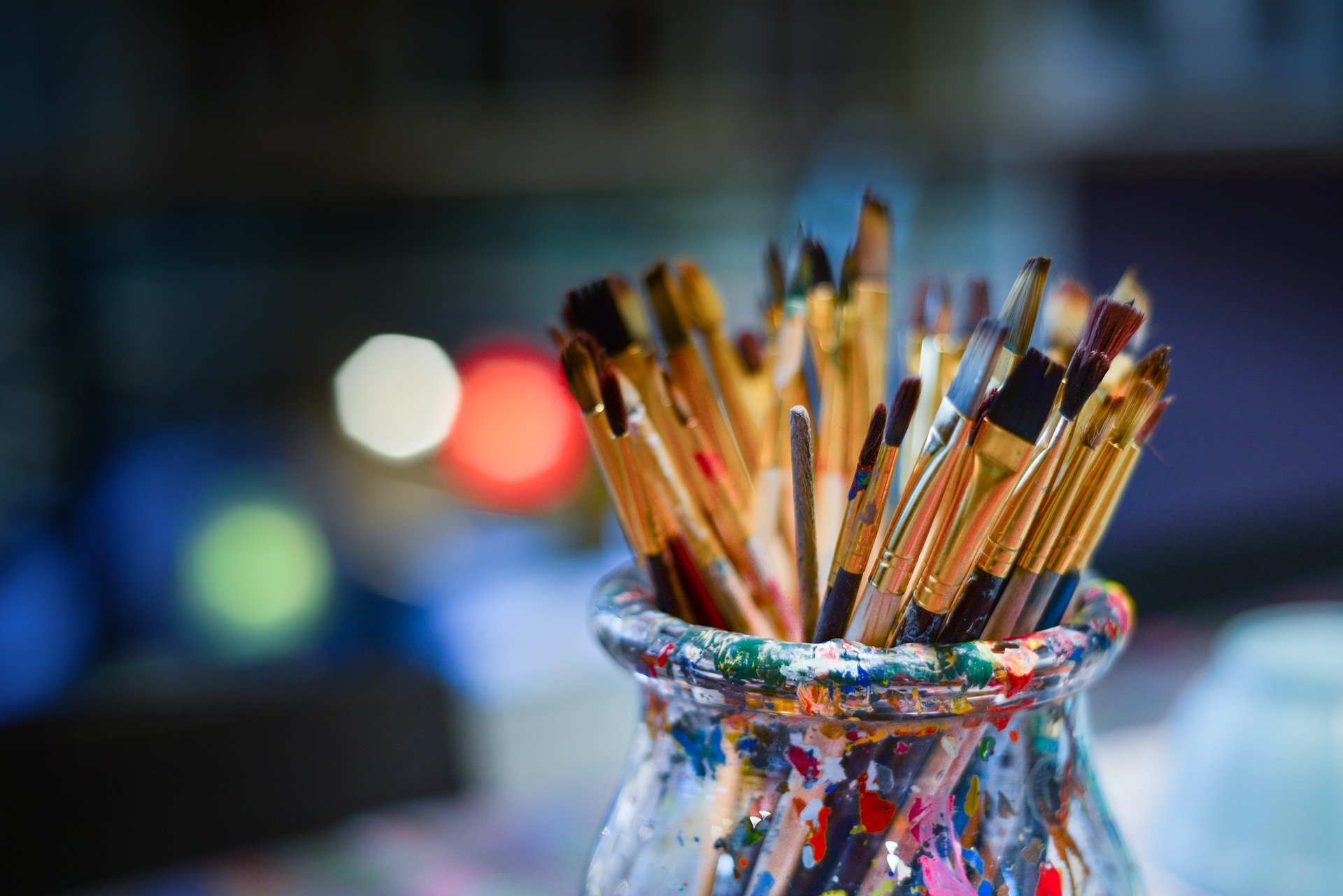 Do you need to write an art essay? Perhaps this is the first time you have been tasked by your professor with such an assignment. Don’t worry though; writing an art essay is not as difficult as you may think. Even though many students don’t know much about art, they still manage to write excellent papers. How do they do it? Simple: they read guides and learn the best tips and tricks from industry experts. Alternatively, they get some help from qualified assignment writers . If you want to write the paper all by yourself, we have all the tips and tricks you need right here. Read on! The Importance of Art Education Essay SamplesSo, what is art essay writing? Why is it important? Truth be told, writing about art can be fun and captivating. However, we realize art is not something everyone is fond of writing about. The main reason why art essay writing is important is because your professor wants to get an interesting, original essay from you. Your final grade depends on your ability to write an excellent paper. What is more important is the art history essay example. Here is why: By reading some art essay examples, you get an idea of how the final version of your paper should look like. Reading works written by seasoned writers can teach you a thing or two about writing in academic format. You can “steal” some ideas from the samples. However, make sure you don’t copy and paste any content from samples you find online. An excellent way to get an art analysis essay example that is 100% original (i.e. you can’t find it anywhere on the Internet) is to have an academic writer compose it from scratch for you. Finding Some Great Art Essay TopicsDo you need to write an essay about art? Or perhaps your professor asked you to write an art analysis essay. In any case, the topic you choose for your paper is very important. As long as you manage to find an intriguing topic, you stand a very good chance of getting bonus points. Let’s face it: professors want original, interesting papers. They are most certainly bored of reading the same art history essay written on the same old topics time and time again. You can even write a “compare and contrast two works of art essay” and stand out from the rest of your class. Here are the three best ways to get some topics for a college essay about art: Search online but don’t pick the obvious topics. Dig deeper and try to find something none of your classmates thought of. Don’t be afraid to ask for ideas on art blogs and forums. There are plenty of experts who will gladly give you some topic ideas for free. Simply contact an academic writing company and ask them to send you a list of original topics. It won’t take them long to send you a comprehensive list of exceptional ideas. Quick Guide on How to Write an Art EssayDo you need to write an “is graffiti art essay” (or an “is graffiti art or vandalism essay”)? Regardless of the topic you choose, there are just a couple of steps you need to follow to write a great essay on art. Let’s show you how to write an art analysis essay in just 5 easy steps:
That’s it! Follow the guide above and create college essay art that will earn you a top grade every time. As a tip, you should consider writing an importance of art education essay. Your professor will be flattered for sure. But of course, you can write anything including an art critique essay and still get a top grade. You just need to be careful about which topic you choose and how you support your thesis statement. Very few professors expect works of art from students. However, they want to see that you’ve really invested some time and effort into writing the best paper possible. Finally, we advise you to steer clear of the renaissance art essay. Writing one is usually more difficult than you think. 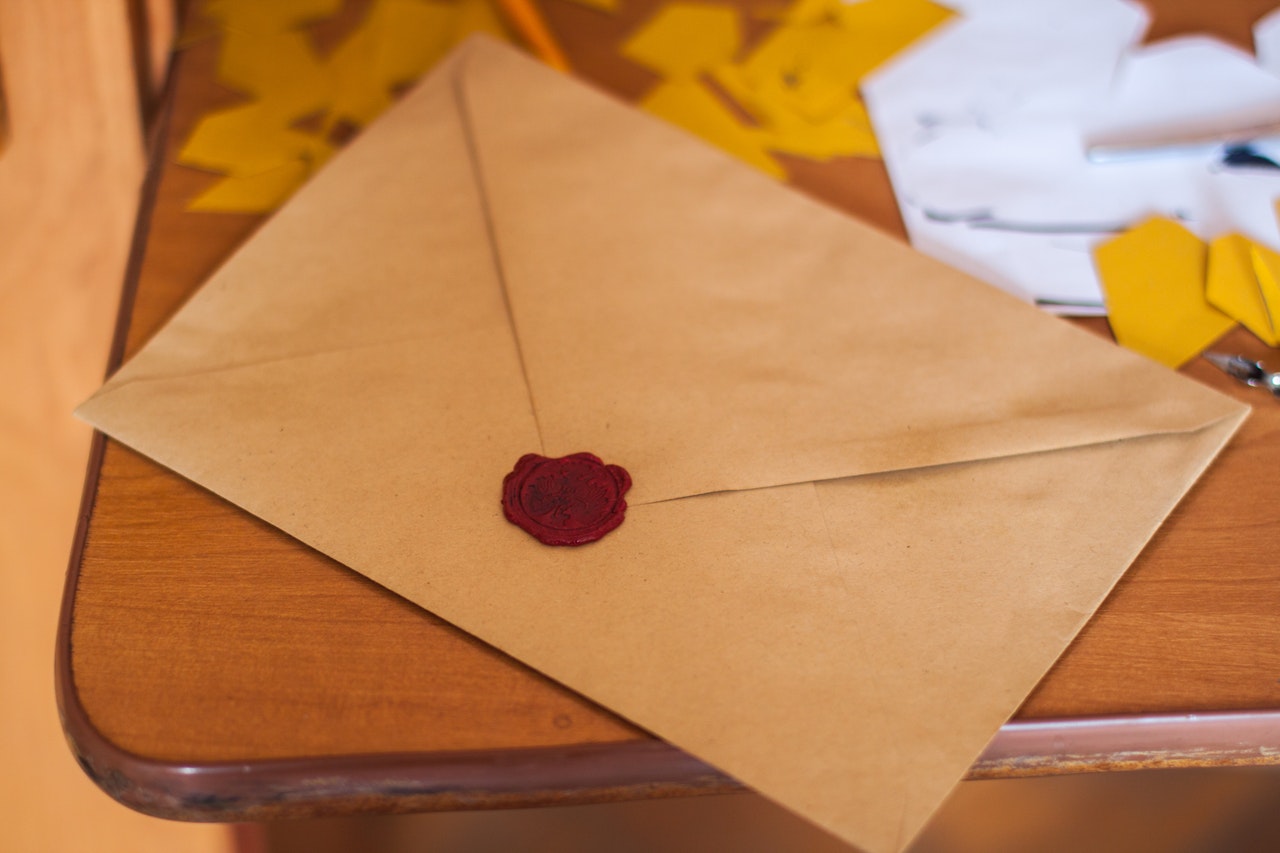 Take a break from writing. Top academic experts are here for you.
Essays About Art: Top 5 Examples and 9 PromptsEssays about art inspire beauty and creativity; see our top essay picks and prompts to aid you. Art is an umbrella term for various activities that use human imagination and talents. The products from these activities incite powerful feelings as artists convey their ideas, expertise, and experience through art. Examples of art include painting, sculpture, photography, literature, installations, dance, and music. Art is also a significant part of human history. We learn a lot from the arts regarding what living in a period is like, what events influenced the elements in the artwork, and what led to art’s progress to today. To help you create an excellent essay about art, we prepared five examples that you can look at:
1. Why Have There Been No Great Women Artists? by Linda Nochlin2. what is art by writer faith, 3. my art taught me… by christine nishiyama, 4. animals and art by ron padgett, 5. the value of art by anonymous on arthistoryproject.com, 1. art that i won’t forget, 2. unconventional arts, 3. art: past and present, 4. my life as an artist, 5. art histories of different cultures, 6. comparing two art pieces, 7. create a reflection essay on a work of art, 8. conduct a visual analysis of an artwork, 9. art period or artist history. “But in actuality, as we all know, things as they are and as they have been, in the arts as in a hundred other areas, are stultifying, oppressive, and discouraging to all those, women among them, who did not have the good fortune to be born white, preferably middle class, and above all, male. The fault lies not in our stars, our hormones, our menstrual cycles, or our empty internal spaces, but in our institutions and our education–education understood to include everything that happens to us from the moment we enter this world…” Nochlin goes in-depth to point out women’s part in art history. She focuses on unjust opportunities presented to women compared to their male peers, labeling it the “Woman Problem.” This problem demands a reinterpretation of the situation’s nature and the need for radical change. She persuades women to see themselves as equal subjects deserving of comparable achievements men receive. Throughout her essay, she delves into the institutional barriers that prevented women from reaching the heights of famous male art icons. “Art is the use of skill and imagination in the creation of aesthetic objects that can be shared with others. It involves the arranging of elements in a way that appeals to the senses or emotions and acts as a means of communication with the viewer as it represents the thoughts of the artist.” The author defines art as a medium to connect with others and an action. She focuses on Jamaican art and the feelings it invokes. She introduces Osmond Watson, whose philosophy includes uplifting the masses and making people aware of their beauty – he explains one of his works, “Peace and Love.” “But I’ve felt this way before, especially with my art. And my experience with artmaking has taught me how to get through periods of struggle. My art has taught me to accept where I am today… My art has taught me that whatever marks I make on the page are good enough… My art has taught me that the way through struggle is to acknowledge, accept and share my struggle.” Nishiyama starts her essay by describing how writing makes her feel. She feels pressured to create something “great” after her maternity leave, causing her to struggle. She says she pens essays to process her experiences as an artist and human, learning alongside the reader. She ends her piece by acknowledging her feelings and using her art to accept them. “I was saying that sometimes I feel sorry for wild animals, out there in the dark, looking for something to eat while in fear of being eaten. And they have no ballet companies or art museums. Animals of course are not aware of their lack of cultural activities, and therefore do not regret their absence.” Padgett recounts telling his wife how he thinks it’s unfortunate for animals not to have cultural activities, therefore, can’t appreciate art. He shares the genetic mapping of humans being 99% chimpanzees and is curious about the 1% that makes him human and lets him treasure art. His essay piques readers’ minds, making them interested in how art elevates human life through summoning admiration from lines and colors. “One of the first questions raised when talking about art is simple — why should we care? Art, especially in the contemporary era, is easy to dismiss as a selfish pastime for people who have too much time on their hands. Creating art doesn’t cure disease, build roads, or feed the poor.” Because art can easily be dismissed as a pastime, the author lists why it’s precious. It includes exercising creativity, materials used, historical connection, and religious value. Check out our best essay checkers to ensure you have a top-notch essay. 9 Prompts on Essays About ArtAfter knowing more about art, below are easy prompts you can use for your art essay: 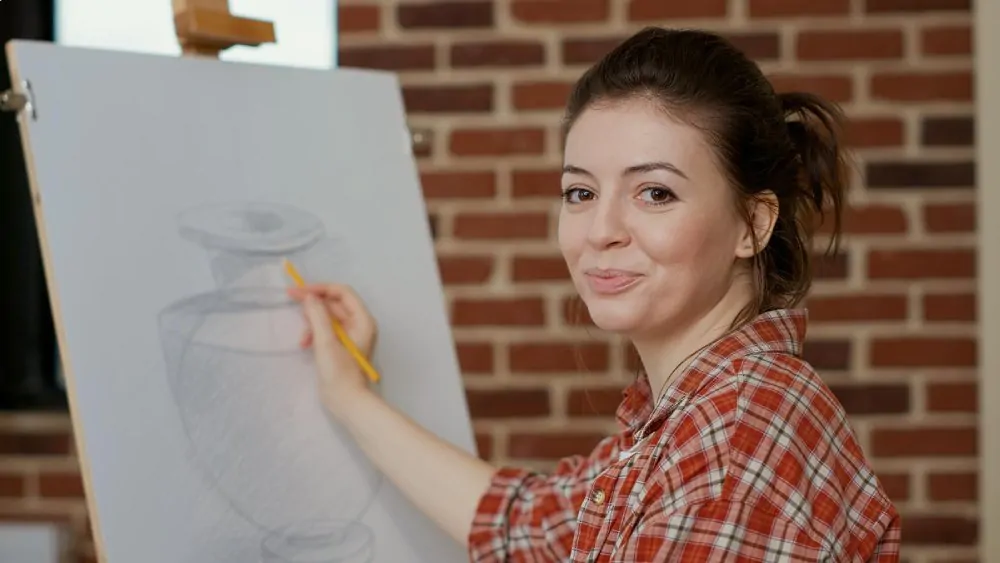 Is there an art piece that caught your attention because of its origin? First, talk about it and briefly summarize its backstory in your essay. Then, explain why it’s something that made an impact on you. For example, you can write about the Mona Lisa and her mysterious smile – or is she smiling? You can also put theories on what could have happened while Leonardo da Vinci painted the Mona Lisa. Rather than focusing on mainstream arts like ballet and painting, focus your essay on unconventional art or something that defies usual pieces, such as avant-garde art. Then, share what you think of this type of art and measure it against other mediums. How did art change over the centuries? Explain the differences between ancient and modern art and include the factors that resulted in these changes. Are you an artist? Share your creative process and objectives if you draw, sing, dance, etc. How do you plan to be better at your craft? What is your ultimate goal? To do this prompt, pick two countries or cultures with contrasting art styles. A great example is Chinese versus European arts. Center your essay on a category, such as landscape paintings. Tell your readers the different elements these cultures consider. What is the basis of their art? What influences their art during that specific period? Like the previous prompt, write an essay about similar pieces, such as books, folktales, or paintings. You can also compare original and remake versions of movies, broadway musicals, etc. Pick a piece you want to know more about, then share what you learned through your essay. What did the art make you feel? If you followed creating art, like pottery, write about the step-by-step process, from clay to glazing. Visual analysis is a way to understand art centered around what the eyes can process. It includes elements like texture, color, line, and scale. For this prompt, find a painting or statue and describe what you see in your essay. Since art is a broad topic, you can narrow your research by choosing only the most significant moments in art history. For instance, if you pick English art, you can divide each art period by century or by a king’s ruling time. You can also select an artist and discuss their pieces, their art’s backstory, and how it relates to their life at the time. If you are interested in learning more, check out our essay writing tips ! 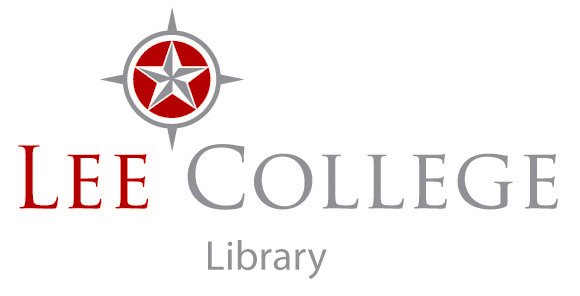 ARTS - Herzberg: Writing Essays About Art
What is a Compare and Contrast Essay?What is a compare / contrast essay. In Art History and Appreciation, contrast / compare essays allow us to examine the features of two or more artworks.
Why would you want to write this type of essay?
How is Writing a Compare / Contrast Essay in Art History Different from Other Subjects?You should use art vocabulary to describe your subjects..
You should have an image of the works you are writing about in front of you while you are writing your essay.
Works of art are highly influenced by the culture, historical time period and movement in which they were created.
If you describe a characteristic of one piece of art, you must describe how the OTHER piece of art treats that characteristic. Example: You are comparing a Greek amphora with a sculpture from the Tang Dynasty in China.  If you point out that the color palette of the amphora is limited to black, white and red, you must also write about the colors used in the horse sculpture.  Organizing Your EssayThesis statement. The thesis for a comparison/contrast essay will present the subjects under consideration and indicate whether the focus will be on their similarities, on their differences, or both. Thesis example using the amphora and horse sculpture -- Differences: While they are both made from clay, the Greek amphora and the Tang Dynasty horse served completely different functions in their respective cultures. Thesis example -- Similarities: Ancient Greek and Tang Dynasty ceramics have more in common than most people realize. Thesis example -- Both: The Greek amphora and the Tang Dynasty horse were used in different ways in different parts of the world, but they have similarities that may not be apparent to the casual viewer. Visualizing a Compare & Contrast Essay:Introduction (1-2 paragraphs) .
Body paragraphs
Conclusion (1-2 paragraphs)
Downloadable Essay Guide
Questions to Ask Yourself After You Have Finished Your Essay
Art Terminology
Lee College Writing CenterWriting Center tutors can help you with any writing assignment for any class from the time you receive the assignment instructions until you turn it in, including:
Contact a tutor:
Other Compare / Contrast Writing Resources
Project Types We Cover
Academic Fields & Subjects
Art Essay Writing GuideBy: Henrique Bertulino 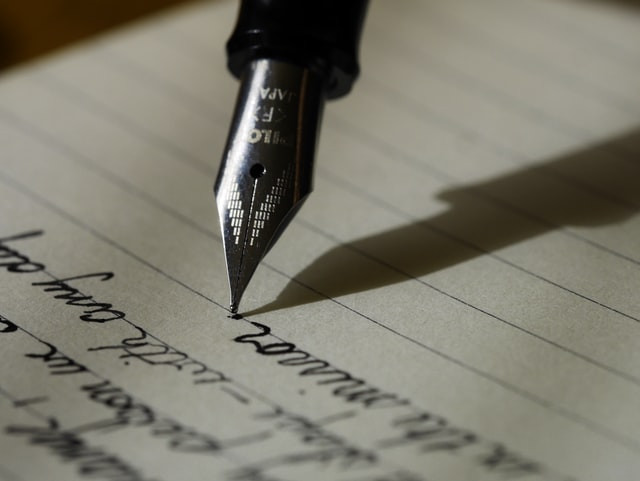 Art Essay is a job that has primarily aesthetic or entertaining value. This term most often uses when referring to literary jobs. A literary and artistic career has primarily aesthetic or fun value. Thus, they are opposed to documentary or scientific positions, because, for the latter, the principal is cognitive value. What Is an Art Essay?What is a short art essay, choose your art topic, research your claims, provide visual analysis, offer clear analysis, how to start your art essay, and what to include, the body of your art essay, how to conclude your art essay, art essay topics examples, art essay outline example, general information, brief description, describe art elements, describe principles of design, opinions and conclusions. The specificity of art jobs is that they often tell about events that seem to have taken place in a fictional world, with fictional characters. Sometimes a job of craft tells about people who exist or existed, but at the same time, the author of such an action can add fictional details. The essay's concept is a unit of which concept defines as pictures, thoughts, and experiences that arise in the reader's imagination during the text's perception. All job aims at analyzing the situation of art through a system of images. The artwork is a kind of art that shows us about the world in the form of poems, paintings, books. In scientific and artistic careers, cognitive information reveals through the plot, characteristics of illustrations, events, phenomena, and years of creation. In terms of genre and thematic diversity, it is stories, cognitive tales, natural phenomena, historical events, outstanding personalities, discoveries in various fields of knowledge. Work with this text format aims to develop students' ability to find cognitive information, identify essential features, establish cause-and-effect relationships, and so on. Art is a complex combination of artistic and professional qualities that determine the painter's job in literature. Art is directly related to creative freedom, originality, taste, a sense of proportion of the author in covering the topic. The painter's process and the principles of each painter's art are based on life's realities. However, a creative idea is not limited to one fact, even if it is incredibly significant. The painter generalizes a specific phenomenon, distinguishes it from similar ones. A high-level professional achieves the desired result due to thorough training, multiplied by the daily job - this is the highest manifestation of the craft embodied. A position of art is a complex unity of components that interconnect into a harmonious whole. The work's ideological content finds its expression through a system of illustrations, which acts as its form, and the type of illustrations, in turn. With the help of the author's word, the student conveys the hero and the author language, which allows them to express the attitude to the world, to give it an assessment. How Do You Write an Art Essay?
It is important to pay sufficient attention to writing. It is good to write on any topic for a literature essay, and then a good grade is provided. It would help if you navigated in general directions; in this case, any item will be within our reach. In addition to the ability to draw up a plan and express your thoughts, it is also essential to get acquainted with various literary jobs: to read. Compare and contrast essay topics on literature are closely related to literary jobs and require reading them. You will need to refer to the characters and argue with facts from domestic and world writers' specific jobs. Read as much as possible, and then writing essays will not be a problem. Over time, the experience of presenting thoughts on a research paper in a structured form appears, then, on the contrary, any topic is understandable. Avoid general wording. If the job talks about treason, this does not mean that this example will fit any topic of the direction. Claims must confirm the thesis, and the argument will answer the question of the definition of the concept. You can use one claim, but in this case, it is necessary to give a full parsing of the job within the framework of the topic. It would help if you did not overload the essay with literary arguments, either for typing words or getting a good grade. As a rule, this only leads to disastrous consequences. Use only the research work that you have read to support the thesis to avoid factual errors. Don't retell the piece. Parsing and your reasoning are needed. Each claim should support your argument, so the topic should make micro-conclusions. There are many types of text analysis: linguistic, lexical, stylistic, literary. The latter includes reviews of a lyric job and a report of a prose job. In addition to a holistic parsing, it is possible to single out such types of parsing as parsing of a separate episode, characterization of a hero, group characteristics of heroes, comparative aspects of two heroes, two jobs, parsing of decorative details (portrait, landscape). All of these types of parsing need to be taught to students. But at the same time, one should not forget that the study's task is not to disassemble a literary job in sections. Mainly the mission is to facilitate an in-depth reading of the research text. It doesn't have to be meaningless. Deep meaningfulness is the first and foremost requirement for parsing and its indispensable conditions. Thus, the report must always assume a goal. In a lesson, we give students an assignment: find in the story a plot, a climax, a denouement. What is the teacher for this assignment? If this is a lesson where the concept of "composition" is first introduced. And its purpose is to give an idea of the composition of a story and teach how to find elements of writing; then, such task justify. If the teacher gave this task to highlight the compositional elements, then the job will already be meaningless, formal. To subordinate the parsing to the goal means studying the situation's aspects to understand its content and meaning. These goals must relate to the matter's essence, leading deep into the essay writer's inner world. It is essential to reveal through parsing what would have gone unnoticed without it. Structure of the Art Essay and Its FeaturesThe structure of the essay consists of three required elements: introduction, body, and conclusion. The absence of one of the article's composition elements is considered a mistake and taken into account in the assessment. It is challenging to write the introduction and conclusion. The presentation's function is to introduce a topic and give preliminary, general information about the problem behind the proposed issue. The end goal is to summarize, summarize what said, complete the research text, and draw attention to the most important thing. The most common flaws when writing an introduction and conclusion:
The introduction should not contain all the information we know about the author and his job. The presentation can introduce the topic and parsing of the post. The introduction may contain an answer to the question asked in the topic. Your opinion can present if the title of the issue includes a reference to the applicant's view. A fact from the biography of the author of a literary job can give. Or a feature of the historical period can be characterized if this information is essential for the subsequent parsing of the text. There is no one type, perfect, an excellent introduction that would fit any topic. The presentation, like the rest of the essay, is written individually. You don't need to go into long arguments right away. First, formulate those problematic questions that can answer in line with your topic. The central section of the essay is parsing a literary job in the aspect set by the theme. The main thing to avoid when writing the main body is to retell a literary task. Retelling the storyline instead of interpreting the idea, supported by references to the job's relevant episodes, lacks content, leading to a decrease in the score. The nature of the topic determines the content and composition of the central section of the essay. The general principles can summarize in short:
The essay ends with a conclusion. The main requirement for the completion: it should not be purely formal. The teacher reading the project should not doubt its necessity. The conclusion should organically link to the previous presentation. In conclusion, it is sometimes appropriate to give an overview of all the points you understood in the central section. Especially if the topic required various material or a long chain of evidence. In conclusion, the writer's attitude to the job, it's heroes, and the problem can express. It must start correctly that without affectation, excessive enthusiastic assessments have a clearly expressed definite sense and must prepare by the central part's material. Otherwise, it would help if you refrained from expressing your opinion. Many students are looking on the Internet - write my essay for me cheap , if you still do not have time to write in person, then use these services.
Introduction:
The next stage is to reflect the position of the author of the text on the highlighted problem. This can sum up in one phrase. How does the author answer this question? Your point of view may coincide with the author's point of view, which may differ from it. To say, "I agree/disagree with the author" is not enough. It is required to bring two arguments. If you provide the same case as the author himself, it does not count. A significant conclusion is a big minus, which says that you cannot summarize your thoughts. The introduction and conclusion should not be more than 25% of the entire job. Schematically, your composition should be similar to the shape of a circle, should be closed. Guidelines for Analysis of Art in Your EssayOutline of a written analysis of the artwork:
When writing your essay, give your definition of "art." Explain why this is how you define the concept. Give two examples to support your reasoning. One example should be from a literary text, and the second example can be from life. Here general information depends on the quality of assimilation and the speed of understanding the text. The continually growing volume of information forces schoolchildren and students to work with documents and adults. Highlighting the main idea quickly will allow you to reduce the time spent on reading. The main body of the text is what the text creates. What the author approves, what denies, what he warns against. The text has a title, which expresses its topic or main idea. The author gradually reveals the text's topic: he moves from one part of the problem to another. Describe what you see in the picture in your own words. You can use epithets, comparisons. Pay attention not only to the main details but also to the secondary ones. Let the picture come to life, become understandable and close. It's always interesting to know why the author chose this particular plot. Perhaps the ever dreamed of writing something like that, or the idea came suddenly, as an inspiration? Was there an incident or the artist was in a non-standard life situation? Maybe age or surroundings played an important role? Sometimes pictures are written in just a few hours and become famous. Sometimes it takes decades to write a canvas. Describe all jobs using this algorithm. Sometimes the plot depicted seems not very attractive, but some fantastic stories connect with the picture itself. First, you need to choose the kind of art with which the knowledgeable are the best, what they like the most. Second, you need to know the appropriate terminology. When writing a response about a fiction job, you need to remember what the plot, composition, means of creating a comic, lyrical hero, artistic ways, theme, idea is. When working on a response about a picture, it is necessary to skillfully use such terms and concepts: the genre of the film, the technique of execution and materials, color, tones and halftones, contrast, the first, second plan, background, the nature of overlaying colors. If a specific person named in the text, you need to be especially careful and cautious in your assessments, their expression, so as not to offend the person, not to put her in an uncomfortable position. This applies not only to some negative phenomena, facts, but also positive ones. The main element of art can be called the jobs themselves, as its physical display. These are pictures, graphics, actors' play, lyrics, and poetry. They can divide into several main types. Before we get into the details of how to value craft, let's re-emphasize that the whole point of recognizing creativity is to explain why we like or dislike something, not just whether we want it or not. For example, you might not like a picture because it is too dark, but you might still like its theme or appreciate it in general. Put, saying, "I don't like this picture" is not enough. We need to know the reasons for your opinion and whether you think that the job has any positive qualities. The easiest way to make out and therefore appreciate a job of craft is to examine its context or premises. This is because it helps us know what was in the painter's mind when creating the post. Art and design are two inextricably linked concepts. The role of design often underestimate, considering its only task to be excessive decoration, and some do not recognize designers as creators, calling them "just decorators." However, this opinion is wrong. Design is one of the highest forms of human creativity because it serves real people's real needs. Design is always functional, and the function can even be the emotion it evokes. Some objects do not need to be practical or economical. But the idea behind them is modern and innovative. Foresees the future trends that make people use them and think, learn, and create. A drawing or illustration conveys the painter's final vision of the idea. This results in an illustration in a book, a canvas in a gallery, a job in a frame that hangs on the wall. Conclusions are a short, concise summary of the main results of the job. Findings should write in the form of short sentences, each of which represents a complete thought. As a rule, conclusions reflect the practical section of the job. Usually, the number of conclusions corresponds to the number of tasks assigned. When completing theses, at least six ends are required. This means that the results obtained by solving one of the problems can describe in several conclusions. Usually, the conclusion is based on the content of the job. For example, in the first part, the main results obtained from the literature's parsing should be presented. It is difficult for students to write new jobs and, therefore, more often search engines, the phrases " write my paper for me " hear. We advise you to use the letter-to-order function, and it saves time, value youth! User ratings: User ratings is 4.8 stars. 4.8 /5 ( 5 Votes)  Head of Customer Success I'm a medical doctor and brand manager. The process of getting into Med school and studying at it made me learn and apply many strategies to keep my productivity high while spending less time and effort. As a working student, I had to figure out how to study smarter, not harder. During this period, my interest in neurology and psychiatry, as well as my aspiration to help others, intensified. At Studybay, I use my knowledge, skills, and experience to develop helpful solutions for students and make their study paths more productive and fun. Add Your Comment We are very interested to know your opinion  Upgrade your writing skills! Try our AI essay writer from Studybay today! 
Art and Art History
Write and Cite
Writing Aids and Publication ManualsWrite about Art

Art History ResourcesGuidelines for analysis of art.
Knowing how to write a formal analysis of a work of art is a fundamental skill learned in an art appreciation-level class. Students in art history survey and upper-level classes further develop this skill. Use this sheet as a guide when writing a formal analysis paper. Consider the following when analyzing a work of art. Not everything applies to every work of art, nor is it always useful to consider things in the order given. In any analysis, keep in mind: HOW and WHY is this a significant work of art? Part I – General Information
Part II – Brief DescriptionIn a few sentences describe the work. What does it look like? Is it a representation of something? Tell what is shown. Is it an abstraction of something? Tell what the subject is and what aspects are emphasized. Is it a non-objective work? Tell what elements are dominant. This section is not an analysis of the work yet, though some terms used in Part III might be used here. This section is primarily a few sentences to give the reader a sense of what the work looks like. Part III – FormThis is the key part of your paper. It should be the longest section of the paper. Be sure and think about whether the work of art selected is a two-dimensional or three-dimensional work. Art Elements
Principles of Design
Part IV – Opinions and ConclusionsThis is the part of the paper where you go beyond description and offer a conclusion and your own informed opinion about the work. Any statements you make about the work should be based on the analysis in Part III above.
General Suggestions
Further InformationFor further information and more discussions about writing a formal analysis, see the following sources. Some of these sources also give information about writing a research paper in art history – a paper more ambitious in scope than a formal analysis. M. Getlein, Gilbert’s Living with Art (10th edition, 2013), pp. 136-139 is a very short analysis of one work. M. Stokstad and M. W. Cothren, Art History (5th edition, 2014), “Starter Kit,” pp. xxii-xxv is a brief outline. S. Barnet, A Short Guide to Writing About Art (9th edition, 2008), pp. 113-134 is about formal analysis; the entire book is excellent for all kinds of writing assignments. R. J. Belton, Art History: A Preliminary Handbook http://www.ubc.ca/okanagan/fccs/about/links/resources/arthistory.html is probably more useful for a research paper in art history, but parts of this outline relate to discussing the form of a work of art. VISIT OUR GALLERIES SEE UPCOMING EXHIBITS
Connect With UsUA Little Rock is an accredited member of the National Association of Schools of Art and Design. Purdue Online Writing Lab Purdue OWL® College of Liberal Arts Writing Essays in Art History Welcome to the Purdue OWLThis page is brought to you by the OWL at Purdue University. When printing this page, you must include the entire legal notice. Copyright ©1995-2018 by The Writing Lab & The OWL at Purdue and Purdue University. All rights reserved. This material may not be published, reproduced, broadcast, rewritten, or redistributed without permission. Use of this site constitutes acceptance of our terms and conditions of fair use. Art History Analysis – Formal Analysis and Stylistic AnalysisTypically in an art history class the main essay students will need to write for a final paper or for an exam is a formal or stylistic analysis. A formal analysis is just what it sounds like – you need to analyze the form of the artwork. This includes the individual design elements – composition, color, line, texture, scale, contrast, etc. Questions to consider in a formal analysis is how do all these elements come together to create this work of art? Think of formal analysis in relation to literature – authors give descriptions of characters or places through the written word. How does an artist convey this same information? Organize your information and focus on each feature before moving onto the text – it is not ideal to discuss color and jump from line to then in the conclusion discuss color again. First summarize the overall appearance of the work of art – is this a painting? Does the artist use only dark colors? Why heavy brushstrokes? etc and then discuss details of the object – this specific animal is gray, the sky is missing a moon, etc. Again, it is best to be organized and focused in your writing – if you discuss the animals and then the individuals and go back to the animals you run the risk of making your writing unorganized and hard to read. It is also ideal to discuss the focal of the piece – what is in the center? What stands out the most in the piece or takes up most of the composition? A stylistic approach can be described as an indicator of unique characteristics that analyzes and uses the formal elements (2-D: Line, color, value, shape and 3-D all of those and mass).The point of style is to see all the commonalities in a person’s works, such as the use of paint and brush strokes in Van Gogh’s work. Style can distinguish an artist’s work from others and within their own timeline, geographical regions, etc. Methods & Theories To Consider: Expressionism Instructuralism Postmodernism Social Art History Biographical Approach Poststructuralism Museum Studies Visual Cultural Studies Stylistic Analysis Example: The following is a brief stylistic analysis of two Greek statues, an example of how style has changed because of the “essence of the age.” Over the years, sculptures of women started off as being plain and fully clothed with no distinct features, to the beautiful Venus/Aphrodite figures most people recognize today. In the mid-seventh century to the early fifth, life-sized standing marble statues of young women, often elaborately dress in gaily painted garments were created known as korai. The earliest korai is a Naxian women to Artemis. The statue wears a tight-fitted, belted peplos, giving the body a very plain look. The earliest korai wore the simpler Dorian peplos, which was a heavy woolen garment. From about 530, most wear a thinner, more elaborate, and brightly painted Ionic linen and himation. A largely contrasting Greek statue to the korai is the Venus de Milo. The Venus from head to toe is six feet seven inches tall. Her hips suggest that she has had several children. Though her body shows to be heavy, she still seems to almost be weightless. Viewing the Venus de Milo, she changes from side to side. From her right side she seems almost like a pillar and her leg bears most of the weight. She seems be firmly planted into the earth, and since she is looking at the left, her big features such as her waist define her. The Venus de Milo had a band around her right bicep. She had earrings that were brutally stolen, ripping her ears away. Venus was noted for loving necklaces, so it is very possibly she would have had one. It is also possible she had a tiara and bracelets. Venus was normally defined as “golden,” so her hair would have been painted. Two statues in the same region, have throughout history, changed in their style. Compare and Contrast EssayMost introductory art history classes will ask students to write a compare and contrast essay about two pieces – examples include comparing and contrasting a medieval to a renaissance painting. It is always best to start with smaller comparisons between the two works of art such as the medium of the piece. Then the comparison can include attention to detail so use of color, subject matter, or iconography. Do the same for contrasting the two pieces – start small. After the foundation is set move on to the analysis and what these comparisons or contrasting material mean – ‘what is the bigger picture here?’ Consider why one artist would wish to show the same subject matter in a different way, how, when, etc are all questions to ask in the compare and contrast essay. If during an exam it would be best to quickly outline the points to make before tackling writing the essay. Compare and Contrast Example: Stele of Hammurabi from Susa (modern Shush, Iran), ca. 1792 – 1750 BCE, Basalt, height of stele approx. 7’ height of relief 28’ Stele, relief sculpture, Art as propaganda – Hammurabi shows that his law code is approved by the gods, depiction of land in background, Hammurabi on the same place of importance as the god, etc. Top of this stele shows the relief image of Hammurabi receiving the law code from Shamash, god of justice, Code of Babylonian social law, only two figures shown, different area and time period, etc. Stele of Naram-sin , Sippar Found at Susa c. 2220 - 2184 bce. Limestone, height 6'6" Stele, relief sculpture, Example of propaganda because the ruler (like the Stele of Hammurabi) shows his power through divine authority, Naramsin is the main character due to his large size, depiction of land in background, etc. Akkadian art, made of limestone, the stele commemorates a victory of Naramsin, multiple figures are shown specifically soldiers, different area and time period, etc. IconographyRegardless of what essay approach you take in class it is absolutely necessary to understand how to analyze the iconography of a work of art and to incorporate into your paper. Iconography is defined as subject matter, what the image means. For example, why do things such as a small dog in a painting in early Northern Renaissance paintings represent sexuality? Additionally, how can an individual perhaps identify these motifs that keep coming up? The following is a list of symbols and their meaning in Marriage a la Mode by William Hogarth (1743) that is a series of six paintings that show the story of marriage in Hogarth’s eyes.

Art Research Guide
Art and Architecture Thesaurus Browser
Art History Analysis – Formal Analysis and Stylistic AnalysisTypically in an art history class the main essay students will need to write for a final paper or for an exam is a formal or stylistic analysis. A formal analysis is just what it sounds like – you need to analyze the form of the artwork. This includes the individual design elements – composition, color, line, texture, scale, contrast, etc. Questions to consider in a formal analysis is how do all these elements come together to create this work of art? Think of formal analysis in relation to literature – authors give descriptions of characters or places through the written word. How does an artist convey this same information? Organize your information and focus on each feature before moving onto the text – it is not ideal to discuss color and jump from line to then in the conclusion discuss color again. First summarize the overall appearance of the work of art – is this a painting? Does the artist use only dark colors? Why heavy brushstrokes? etc and then discuss details of the object – this specific animal is gray, the sky is missing a moon , etc. Again, it is best to be organized and focused in your writing – if you discuss the animals and then the individuals and go back to the animals you run the risk of making your writing unorganized and hard to read. It is also ideal to discuss the focal of the piece – what is in the center? What stands out the most in the piece or takes up most of the composition? A stylistic approach can be described as an indicator of unique characteristics that analyzes and uses the formal elements (2-D: Line, color, value, shape and 3-D all of those and mass).The point of style is to see all the commonalities in a person’s works, such as the use of paint and brush strokes in Van Gogh’s work. Style can distinguish an artist’s work from others and within their own timeline, geographical regions, etc. Methods & Theories To Consider: Expressionism Instructuralism Postmodernism Social Art History Biographical Approach Poststructuralism Museum Studies Visual Cultural Studies Stylistic Analysis Example: The following is a brief stylistic analysis of two Greek statues, an example of how style has changed because of the “essence of the age.” Over the years, sculptures of women started off as being plain and fully clothed with no distinct features, to the beautiful Venus/Aphrodite figures most people recognize today. In the mid-seventh century to the early fifth, life-sized standing marble statues of young women, often elaborately dress in gaily painted garments were created known as korai. The earliest korai is a Naxian women to Artemis. The statue wears a tight-fitted, belted peplos, giving the body a very plain look. The earliest korai wore the simpler Dorian peplos, which was a heavy woolen garment. From about 530, most wear a thinner, more elaborate, and brightly painted Ionic linen and himation. A largely contrasting Greek statue to the korai is the Venus de Milo. The Venus from head to toe is six feet seven inches tall. Her hips suggest that she has had several children. Though her body shows to be heavy, she still seems to almost be weightless. Viewing the Venus de Milo, she changes from side to side. From her right side she seems almost like a pillar and her leg bears most of the weight. She seems be firmly planted into the earth, and since she is looking at the left, her big features such as her waist define her. The Venus de Milo had a band around her right bicep. She had earrings that were brutally stolen, ripping her ears away. Venus was noted for loving necklaces, so it is very possibly she would have had one. It is also possible she had a tiara and bracelets. Venus was normally defined as “golden,” so her hair would have been painted. Two statues in the same region, have throughout history, changed in their style. Compare and Contrast EssayMost introductory art history classes will ask students to write a compare and contrast essay about two pieces – examples include comparing and contrasting a medieval to a renaissance painting. It is always best to start with smaller comparisons between the two works of art such as the medium of the piece. Then the comparison can include attention to detail so use of color, subject matter, or iconography. Do the same for contrasting the two pieces – start small. After the foundation is set move on to the analysis and what these comparisons or contrasting material mean – ‘what is the bigger picture here?’ Consider why one artist would wish to show the same subject matter in a different way, how, when, etc are all questions to ask in the compare and contrast essay. If during an exam it would be best to quickly outline the points to make before tackling writing the essay. Compare and Contrast Example: Stele of Hammurabi from Susa (modern Shush, Iran), ca. 1792 – 1750 BCE, Basalt, height of stele approx. 7’ height of relief 28’ Stele, relief sculpture, Art as propaganda – Hammurabi shows that his law code is approved by the gods, depiction of land in background , Hammurabi on the same place of importance as the god, etc. Top of this stele shows the relief image of Hammurabi receiving the law code from Shamash, god of justice, Code of Babylonian social law, only two figures shown , different area and time period, etc. Stele of Naram-sin , Sippar Found at Susa c. 2220 - 2184 bce. Limestone, height 6'6" Stele, relief sculpture, Example of propaganda because the ruler (like the Stele of Hammurabi) shows his power through divine authority, Naramsin is the main character due to his large size, depiction of land in background, etc. Akkadian art, made of limestone, the stele commemorates a victory of Naramsin, multiple figures are shown specifically soldiers, different area and time period, etc. IconographyRegardless of what essay approach you take in class it is absolutely necessary to understand how to analyze the iconography of a work of art and to incorporate into your paper. Iconography is defined as subject matter, what the image means. For example, why do things such as a small dog in a painting in early Northern Renaissance paintings represent sexuality? Additionally, how can an individual perhaps identify these motifs that keep coming up? The following is a list of symbols and their meaning in Marriage a la Mode by William Hogarth (1743) that is a series of six paintings that show the story of marriage in Hogarth’s eyes.
Defining Art Criticism
A professional art critic may be
Journalistic criticism –
Scholarly art criticism
FORMAL ANALYSIS
1. Description = pure description of the object without value judgments, analysis, or interpretation.
a. Form of art whether architecture, sculpture, painting or one of the minor arts b. Medium of work whether clay, stone, steel, paint, etc., and technique (tools used) c. Size and scale of work (relationship to person and/or frame and/or context) d. Elements or general shapes (architectural structural system) within the composition, including building of post-lintel construction or painting with several figures lined up in a row; identification of objects e. Description of axis whether vertical, diagonal, horizontal, etc. f. Description of line, including contour as soft, planar, jagged, etc. g. Description of how line describes shape and space (volume); distinguish between lines of objects and lines of composition, e.g., thick, thin, variable, irregular, intermittent, indistinct, etc. h. Relationships between shapes, e.g., large and small, overlapping, etc. i. Description of color and color scheme = palette j. Texture of surface or other comments about execution of work k. Context of object: original location and date 2. Analysis = determining what the features suggest and deciding why the artist used such features to convey specific ideas.
a. Determination of subject matter through naming iconographic elements, e.g., historical event, allegory, mythology, etc. b. Selection of most distinctive features or characteristics whether line, shape, color, texture, etc. c. Analysis of the principles of design or composition, e.g., stable, repetitious, rhythmic, unified, symmetrical, harmonious, geometric, varied, chaotic, horizontal or vertically oriented, etc. d. Discussion of how elements or structural system contribute to appearance of image or function e. Analysis of use of light and role of color, e.g., contrasty, shadowy, illogical, warm, cool, symbolic, etc. f. Treatment of space and landscape, both real and illusionary (including use of perspective), e.g., compact, deep, shallow, naturalistic, random g. Portrayal of movement and how it is achieved h. Effect of particular medium(s) used i. Your perceptions of balance, proportion and scale (relationships of each part of the composition to the whole and to each other part) and your emotional j. Reaction to object or monument 3. Interpretation = establishing the broader context for this type of art.
a. Main idea, overall meaning of the work. b. Interpretive Statement: Can I express what I think the artwork is about in one sentence? c. Evidence: What evidence inside or outside the artwork supports my interpretation? 4. Judgment: Judging a piece of work means giving it rank in relation to other works and of course considering a very important aspect of the visual arts; its originality.
Barrett's Principles of Interpretation
Art Criticism
Ways to Describe ArtGeneral Information In many cases, this information can be found on the label or a quick google search.
Ways to Describe Form
Art Criticism & ResponseART CRITICISM Please complete a formal analysis, interpretation and critique based on your chosen theme and artist:
InformationFiu libraries floorplans, green library, modesto a. maidique campus.
Hubert Library, Biscayne Bay Campus
 Directions: Green Library, MMCDirections: Hubert Library, BBCEssay on Art500 words essay on art. Each morning we see the sunshine outside and relax while some draw it to feel relaxed. Thus, you see that art is everywhere and anywhere if we look closely. In other words, everything in life is artwork. The essay on art will help us go through the importance of art and its meaning for a better understanding.  What is Art?For as long as humanity has existed, art has been part of our lives. For many years, people have been creating and enjoying art. It expresses emotions or expression of life. It is one such creation that enables interpretation of any kind. It is a skill that applies to music, painting, poetry, dance and more. Moreover, nature is no less than art. For instance, if nature creates something unique, it is also art. Artists use their artwork for passing along their feelings. Thus, art and artists bring value to society and have been doing so throughout history. Art gives us an innovative way to view the world or society around us. Most important thing is that it lets us interpret it on our own individual experiences and associations. Art is similar to live which has many definitions and examples. What is constant is that art is not perfect or does not revolve around perfection. It is something that continues growing and developing to express emotions, thoughts and human capacities. Importance of ArtArt comes in many different forms which include audios, visuals and more. Audios comprise songs, music, poems and more whereas visuals include painting, photography, movies and more. You will notice that we consume a lot of audio art in the form of music, songs and more. It is because they help us to relax our mind. Moreover, it also has the ability to change our mood and brighten it up. After that, it also motivates us and strengthens our emotions. Poetries are audio arts that help the author express their feelings in writings. We also have music that requires musical instruments to create a piece of art. Other than that, visual arts help artists communicate with the viewer. It also allows the viewer to interpret the art in their own way. Thus, it invokes a variety of emotions among us. Thus, you see how essential art is for humankind. Without art, the world would be a dull place. Take the recent pandemic, for example, it was not the sports or news which kept us entertained but the artists. Their work of arts in the form of shows, songs, music and more added meaning to our boring lives. Therefore, art adds happiness and colours to our lives and save us from the boring monotony of daily life. Get the huge list of more than 500 Essay Topics and Ideas Conclusion of the Essay on ArtAll in all, art is universal and can be found everywhere. It is not only for people who exercise work art but for those who consume it. If there were no art, we wouldn’t have been able to see the beauty in things. In other words, art helps us feel relaxed and forget about our problems. FAQ of Essay on ArtQuestion 1: How can art help us? Answer 1: Art can help us in a lot of ways. It can stimulate the release of dopamine in your bodies. This will in turn lower the feelings of depression and increase the feeling of confidence. Moreover, it makes us feel better about ourselves. Question 2: What is the importance of art? Answer 2: Art is essential as it covers all the developmental domains in child development. Moreover, it helps in physical development and enhancing gross and motor skills. For example, playing with dough can fine-tune your muscle control in your fingers. Customize your course in 30 secondsWhich class are you in. 
Leave a Reply Cancel replyYour email address will not be published. Required fields are marked * Download the App The Elements of Art Eight tools, infinite expression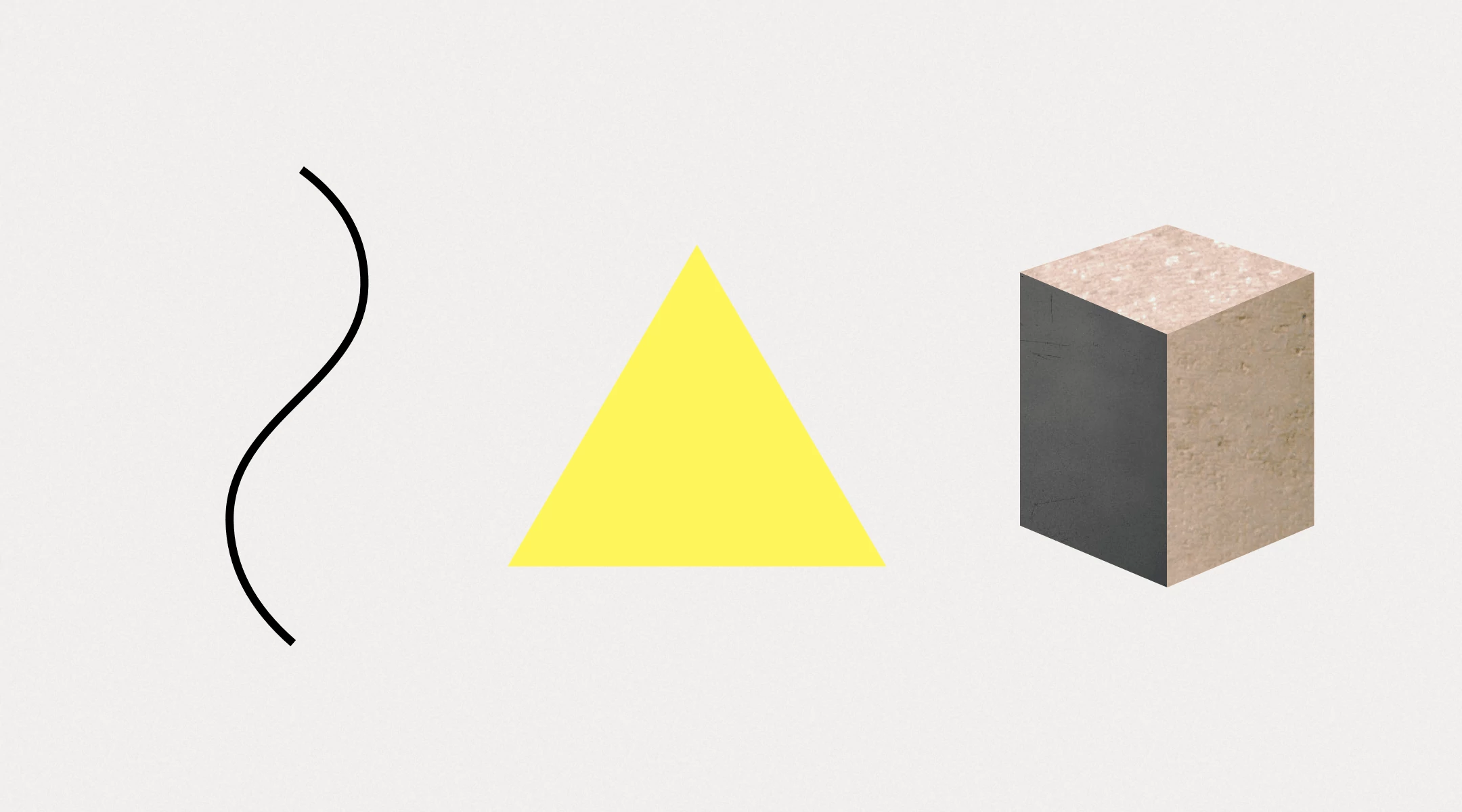 All artwork speaks the same language through a vocabulary of eight terms expressed in infinite ways. We all understand the vocabulary of art subconsciously, but recognizing how it’s applied enriches our experience of art and allows for nuanced discussion of artworks and appreciation of the artist's passion and skill. The vocabulary of art is made up of the Formal Elements of Design: line, shape, form, space, color, texture, motion, and time.  The most basic element of design is the line: a mark with greater length than width, the path traced by a moving point. In mathematics, a line has no width, but in art, lines can be thin, thick, rough or smooth. Lines can convey tremendous emotion, from aggressive zig-zags or tranquil waves to nauseating spirals. Artists can convey confidence in bold lines, or precision with straight lines.  A shape is formed when lines enclose a space. The edges of the shape are its contour, which can be geometric or organic, open or closed. Like lines, shapes can be expressive, sharp or soft, architecturally rigid or flowing. Simple shapes form a common vocabulary that stretches back millenia, often associated with specific attributes. Roman Architects believed the circle to be divinely perfect, and used it when designing their temples. Triangles were imagined to point to the heavens.  Form is the real or perceived dimensionality of a shape, expressing length, width, and depth. Spheres, cubes, pyramids are three-dimensional forms, and some of the fundamental building blocks for expression in art. Form can also describe the structure of a work of art. The composition of a painting or the chapters of a book. Form can be used to talk about the arrangement of formal elements that present the whole.  Space is the area between and around objects. In art and design, the space is as important as the forms it surrounds. Space can be two or three dimensional, and is often referred to as negative space. Space holds the objects it contains, providing context. Space is as emotive as lines and shapes, and can create feelings of isolation, claustrofobia, or wide open possibility.  Color is possibly the most complex tool at the artist's disposal. Color is scientifically defined as the light that reflects off illuminated objects, whose pigmentation absorbs some wavelengths, and the wavelengths that remain enter the eye. The colors we see are part of the visible spectrum: red, orange, yellow, green, blue, and indigo, but these colors combine into millions of perceivable colors. To talk about the variations of colors, we use the terms hue, value, and intensity. Hue defines the range the color sits within, like a greenish yellow or a yellowy green. Value is the relative lightness or darkness of the color, and intensity is the relative brightness or dullness of the color.  Texture comes from the latin word texo , meaning 'to weave' and refers to the qualities of a material surface. Texture may be seen and felt in dimensional objects, such as canvas or a marble sculpture, and two-dimensional objects can create the illusion of texture, like a photograph of a rough wooden surface. Texture can be evocative. Smooth objects can feel refined, and rough surfaces may create a gritty, aggressive appearance.  Motion is the movement or change of an object over time. In art motion can be applied to sculpture, called kinetic sculpture , and is a natural element of video and performance art.  The effect of time on artwork is an oft overlooked element of design. All objects change over time, though in different ways. A stone artifact from 30,000 BCE may be nearly unchanged from the time of its creation, but paintings fade. Time is also part of how we consume art. A book may take weeks to read, and that time creates a different context for the experience than an article read in minutes. Video uses time the same way a painter uses negative space, employing pacing, momentum, and balance over the length of the film. Reed Enger, "The Elements of Art, Eight tools, infinite expression," in Obelisk Art History , Published June 24, 2017; last modified November 08, 2022, http://www.arthistoryproject.com/essays/the-elements-of-art/. 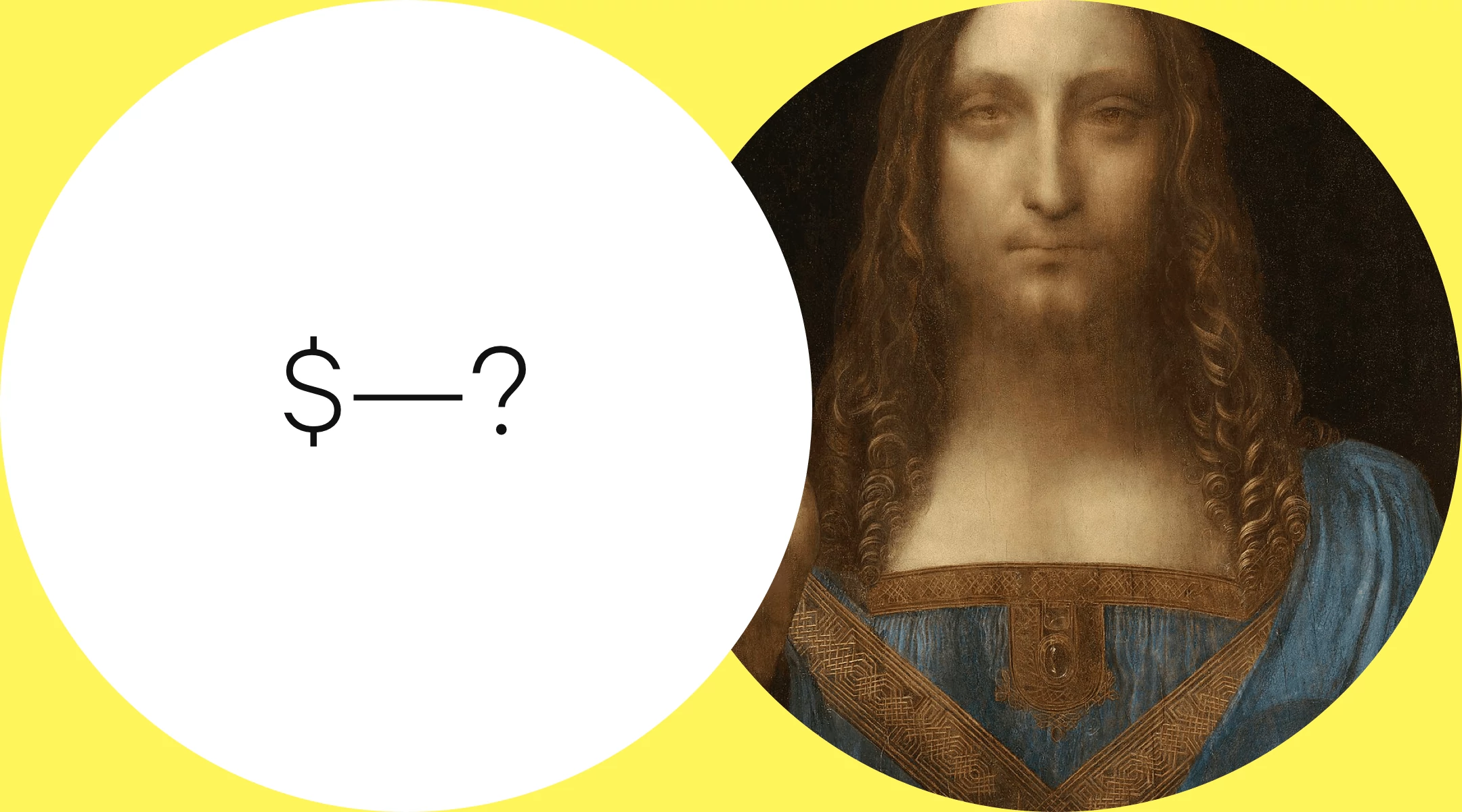 The Value of ArtWhy should we care about art?  Is there such a thing as Bad Art?Yes, but it's complicated 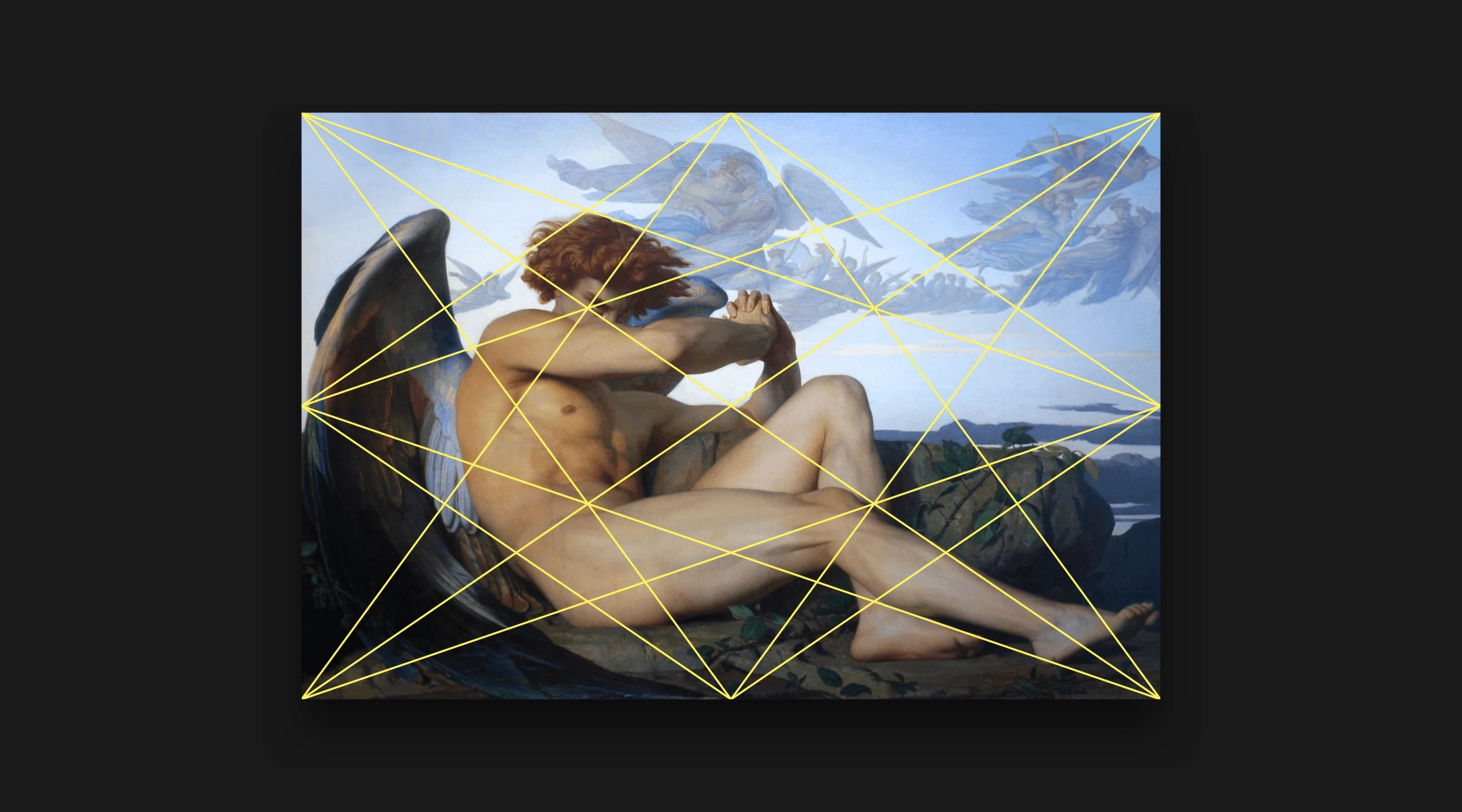 Advanced Composition TechniquesLet's get mathematical By continuing to browse Obelisk you agree to our Cookie Policy Art MarketingThe art of writing about your art: from artwork description to artist statement. 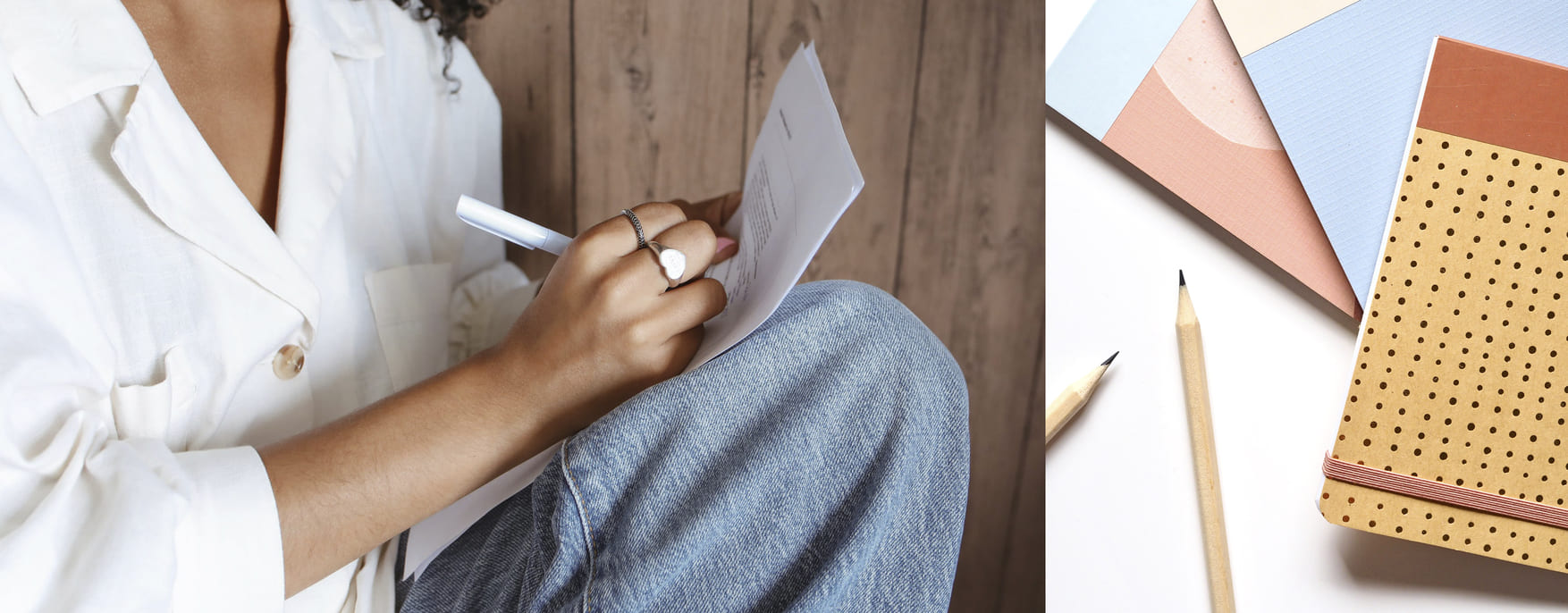 There is a popular saying we all have accepted as a truth: “A picture is worth a thousand words”. But what happens when we want to talk about the picture, and what we think of it, what it made us feel, what it reminded us of? For visual artists, words are a tool needed to effectively communicate what they do, and spark conversation around their work. For artists and art businesses alike, mastering the art of writing about their creations is a key communicational asset that can help them improve how they present their work to their target audience. Good communication can elevate a pitch for exhibitions and events, strengthen the connections built through networking, and drive more traffic to a website, generating opportunities for more art sales or commissions. Keep reading to find helpful guides, prompts, and even “fill in” forms to improve your art writing skills.  Why polishing your writing skills is key to growing as an artist or art businessLanguage helps us elaborate on a subject and create a connection with the reader. It’s also a tool to focus people’s attention on particular characteristics and even, to drive them to follow an action, like moving forward in the art buyer’s journey you have designed for people that have shown interest in your work. Writing is an indispensable skill in a world where the digital and physical spaces are intertwined . Creative writing is an essential part of any art marketing strategy or communication plan that aims to promote your work and get it noticed online or offline. Plus, there are several instances where you will need to use your writing skills as an artist, for example: -Creating your own business or professional website . -Writing a blog post to engage with your audience. -Coming up with a creative caption for your social media posts , -Improving your artwork descriptions for exhibitions or e-commerce websites . -Describing your virtual exhibition or online art show . -Crafting an artist statement or an exhibition statement . -Updating your artist resume . -Crafting an exhibition proposal for a gallery . -Writing invitations for an art show. -Creating an art or artist newsletter or any email communication. -Submitting your work for art fairs. -Applying for scholarships, awards, grants, and residencies. -Filling out your application for teaching opportunities. -Drafting an art business plan. How to break free from “writer’s block” as an artistHave you ever faced the fear that only a blank canvas can produce? The same thing might happen when you face a blank page and the pressure to write. It happens to everyone, even the most prolific writers. Writer’s block is only a period when your creative flow finds a roadblock, and there are many ways to break from it. Here are some ideas to spark your imagination and get you into writing: – Record yourself: use the recording app on your mobile phone and freely talk about the subject you want to write about. After, you can listen to yourself, take notes, and turn them into text. – Talk to a friend: a really good prompt to get you writing about any subject is leaving aside the pressure of sounding “artsy” or “professional”, and telling whatever you want to express in your own words like you would do in an intimate conversation with a friend. – Use AI tools: technology is always there to help you, if you don’t know where to start you can use AI software to draft general ideas or even the structure of the text. Here are some proven ChatGPT prompts to write everything from an artwork description to an email. – Feed your creativity: remember that Pablo Picasso quote, “Inspiration exists, but it has to find you working”? Well, sometimes, you need to work to get inspired. Read a book or an article about the subject you want to write about, listen to music that gets you in the right mindset, and even watch a movie or series that can give you a different point of view about that theme.  Prompts to write about your artworkIf you want to exercise the way you write about your art and what you create, following creative prompts is a good way to take you to new places and express yourself beyond the canvas (or medium of preference). Here is a list of prompts, ideas, or phrases to follow and get you writing about your art and create a first draft: -I usually find inspiration in… -I created this because… -My primary emotion while making this was… -My main influences are… -I decided to work with this medium because… -What you are looking at is… -Through my creations, I’m investigating… -I chose this subject because… -The concept of this artwork came to me when… -I could describe my creative process as -What defines my body of work/collection/group of artworks is… 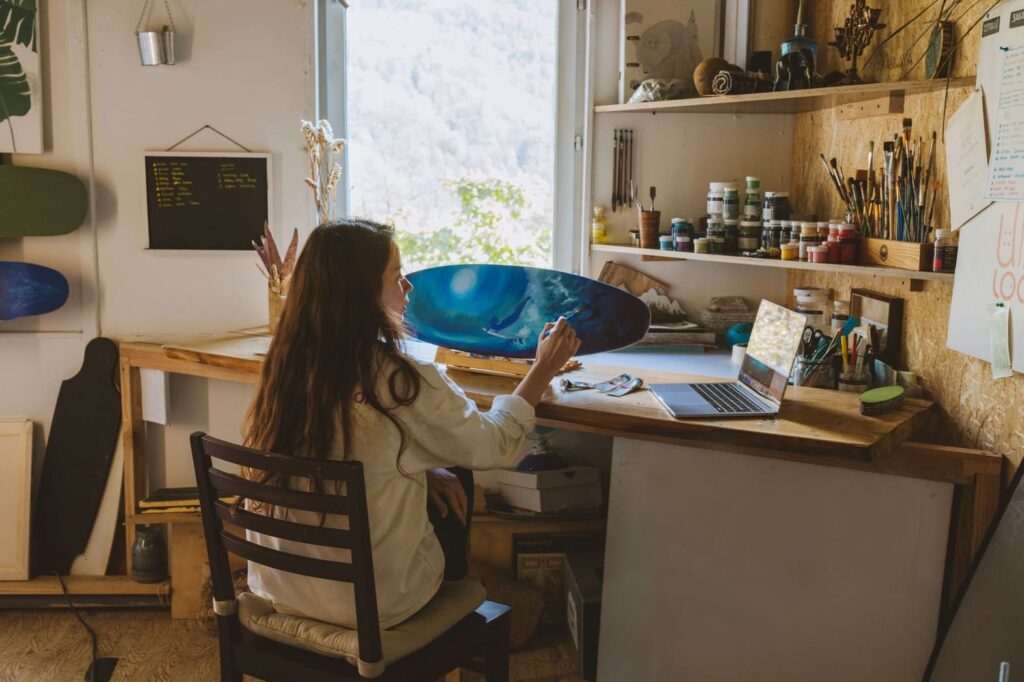 List of adjectives to write about your artIn their most simple definition, adjectives are words we use to describe characteristics of a certain subject. When you are writing about art, these are your tools to convey your impressions and ideas about a certain piece and communicate them to the reader. Here is a list of art-related adjectives you can use to nurture your writing: – About the style or genre: abstract, realistic, modern, contemporary, digital, postmodern, expressionist, mixed media, avant-garde, minimalist, pop art, pointillist, sculptural, surrealist. – About the subject: portrait, self-portrait, still-life, landscape, symbolic, figurative, seascape, mythological. – About the tone: expressive, symbolic, provocative, articulated, crude, defying, dramatic, dynamic, evocative, fragmented, gestural, harmonious, introspective, interactive, organic, subliminal, traditional, and experimental. – About the colors: bright, saturated, muted, subtle, bold, monochrome, contrasting, tonal, complementary, balanced, vibrant, warm and cool. Want to continue expanding your vocabulary? Check these lists of art terms every creative should know: Part 1 and Part 2 . 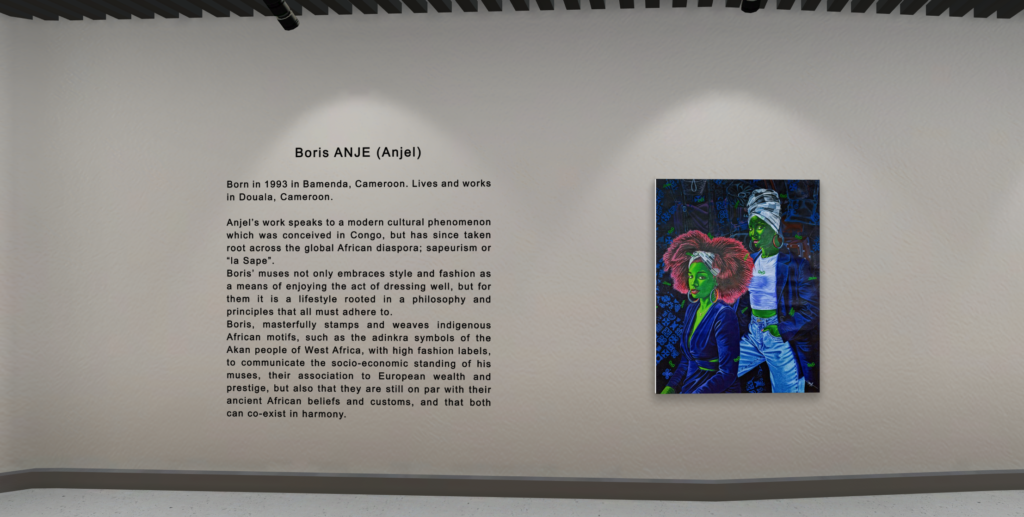 Start writing about your artworks: “fill in the blank” exercisesNow that you know how to find inspiration, and even have a list of prompts to motivate you to write, it’s time to work on different formats that you will certainly use for career or art business purposes . Take these “fill in the blank” exercises as a first draft for any of the suggested content, you should always revisit them, and edit them before publishing. Remember to always check twice for grammar and spelling mistakes. How to write an artist’s statementArtist’s statements are usually the welcome message to their exhibitions and related publications. This text is also a way to present themselves and their work in summary, covering the main information any art lover or potential collector should know about their body of work and the person behind it at first glance. Draft your first artist’s statement with this “fill in the blank” example: “(Artist’s name) is a (type of artist) whose work delves into ideas of (broad topic). This exhibition brings together (types of artworks) that explore (narrow theme).” How to write a press releasePart of the success of a virtual or in situ exhibition relies on a killer art marketing strategy to promote it. One of the main assets you will need to prepare to get media attention and assistance is a press release. You can start working on your own with this exercise, just fill in the blank spaces: “Press release title: (name of artists) presents (name of exhibition) at (venue or website) (Artist’s name or collective) presents their latest exhibition (name of the art show) based on (overall theme) in (name and location of the venue or link to website for online shows) from (opening date) to (full duration of the exhibition). Dive into the work of (artist’s name), who lives in (location), where they have developed a body of work focused on (themes). They have a background on (education or experience) and have been the recipient of (awards, grants, and residencies). With their latest work (artist’s name) explores (themes), focusing on (subjects) through the use of (medium or technique). The exhibition conveys (visitor’s experience) as a result of the work with (name of curator). Contact information: email, phone number, website, and social media channels” Check Gita Joshi ’s prompts and recommendations for writing a press release on this exclusive ArtPlacer Academy webinar “ How to craft an art show proposal ”. Take the lesson by logging into your ArtPlacer account or starting your free trial. How to write an artwork descriptionOne of the most important texts you will write is an artwork description, this text is essential to drive traffic to your website, and e-commerce page, to get your art noticed by people looking for similar creations on social media. This is also used for gallery and exhibition purposes. With this basic “fill in the blank” form, you will be able to quickly come up with a draft for a description for any artwork: “(name of the artwork) created by (artist’s name) on (medium) with (technique or style). This piece details/captures (subject matter) inspired by (theme).” 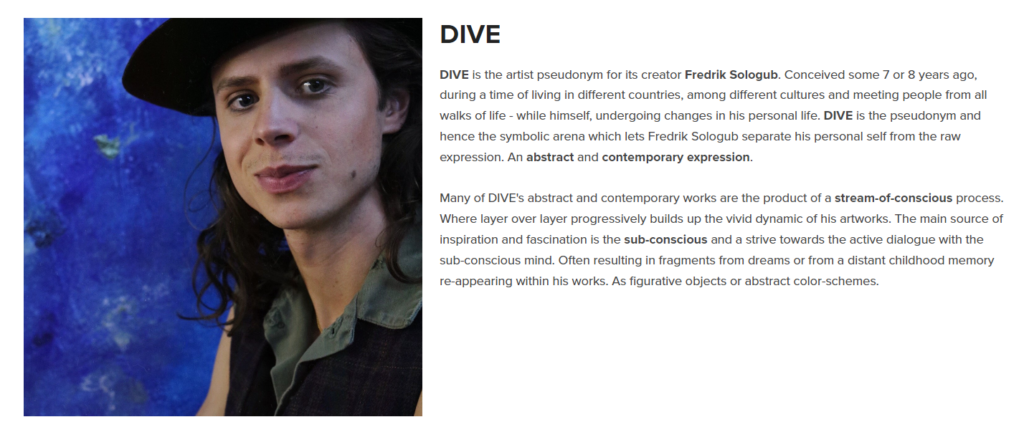 How to write a short bio for an artistA short bio of you as an artist could be requested when applying for a job, when working on the “About me” page of your website, or the brochure of your next exhibition. This might be one of the texts that artists usually hesitate to write because it is difficult to summarize oneself in a few words, but with this “fill in” exercise you’ll come up with a starting paragraph for it. Remember: your bio can be written in the first or third person depending on where you are going to present it and the tone you need to convey. “(Artist’s name) is a (type of artist), based on/from (country, city). Born in (year), his/her/their work focuses on (main themes) which they explore through (preferred medium). They have a background in (expertise) having assisted to (academic background) and have worked with (previous commissioned work or general working background). They are inspired by (themes) and moved by the exploration of (subjects), they have been influenced by (general influences). They have exhibited their work in (previous exhibitions) and are the recipient of (awards, residencies)” Now that you know the basics, you can start working on your texts and polishing your writing skills to better communicate your vision as an artist! Related Articles All eyes on you: 7 tips to get your art noticed online The ultimate artist's website checklist: must-dos, must-haves, and essentials You’ve got mail: how to build a newsletter and mailing list as an artistLeave a comment.  | |||||||||||||||||||||||||||||||||||||||||||||||||||||||||||||||||||||||
IMAGES
COMMENTS
The whole art essay is based on what you want others to know about the piece of art. Personal interests: what you, as a writer, love is very important as it narrows down the topic. ... The art essay writing guide can also be used to find more about art essay writing steps. Different sources could give different art essay outlines so you need to ...
An art essay is a kind of work that analyzes the aspects of artworks, such as sculpture, painting, music, and architecture. These essays can be used with the aim to investigate the visual elements of the artworks. For instance, an art essay may examine the optical components and creative approaches used in particular pieces of art.
Both communications and art history students use visual analysis to understand art and other visual messages. In our article, we will define the term and give an in-depth guide on how to look at a piece of art and write a visual analysis essay. Stay tuned until the end for a handy visual analysis essay example from our graduate paper writing ...
This is one of the best ways for students to learn. Instructors who assign formal analyses want you to look—and look carefully. Think of the object as a series of decisions that an artist made. Your job is to figure out and describe, explain, and interpret those decisions and why the artist may have made them.
An art essay is a literary composition that analyzes different aspects of artwork, including paintings, sculpture, poems, architecture, and music. These essays look at the visual elements of different artworks. An art essay, for example, might look at the optical elements and creative approaches utilized in particular works of art.
When we say intensely personal, we mean the narrative voice that you use and the story that you tell. The events that make up who we are, why we care, and how we express that care, are likely small moments that lead up to the big moments. That's what we challenge you to write about when it comes to writing about "art.".
with formal essay writing. The rationale for this arrangement is that scholarly writing is not simple, but that its complexity and practical value stem from a systematic, patient approach to organizing and presenting evidence, not from any rigid rules of content. All in all, the modest goal of this book is to make academic art writing painless and
Art Essay Topics IELTS. Here are some art essay topics for IELTS students. Take a look: The value of art education. The role of museums in preserving art and culture. The impact of globalization on contemporary art. The influence of technology on art and artists. The significance of public art in urban environments.
The structure of the Arts essay generally has an introduction, main body and conclusion. The introduction is the first piece of the essay and is commonly written alongside the conclusion. A good Arts essay requires the introduction to grab the reader's interest immediately. Advice to the writer is to start with his/her claim right away.
Craft a catchy conclusion. You need to summarize everything you're discussed and - optionally - write a call to action. This is the way to end every essay from a compare and contrast art essay to an art critique example essay. Edit everything and proofread it twice. Make sure your paper is well organized and your writing flows well.
In many ways, writing an art history essay is similar to writing other types of essays in the humanities. It requires a clear and focused topic, an arguable thesis, an organized format and structure, clear and coherent paragraphs, and a command of grammar and style. It is important to note that writing about art can encompass a broad range of ...
8. Conduct a Visual Analysis of an Artwork. Visual analysis is a way to understand art centered around what the eyes can process. It includes elements like texture, color, line, and scale. For this prompt, find a painting or statue and describe what you see in your essay. 9. Art Period or Artist History.
Works of art are highly influenced by the culture, historical time period and movement in which they were created. You should gather information about these BEFORE you start writing your essay. If you describe a characteristic of one piece of art, you must describe how the OTHER piece of art treats that characteristic.
Writing. The conventions for a formal analysis for a work of art is similar to other writing in the humanities. You. should have a thesis statement and structured paragraphs, and you should adhere to general rules of grammar and style. Remember that you are not simply describing the work; rather, you are using your descriptions of the work to ...
Structure of the Art Essay and Its Features. The structure of the essay consists of three required elements: introduction, body, and conclusion. The absence of one of the article's composition elements is considered a mistake and taken into account in the assessment. It is challenging to write the introduction and conclusion.
A resource for help with your writing. The Writing Center includes one on one consultations as well as classes. The OWL Purdue is a great resource for writing and citation help. Chicago Style is the preferred citation format for art history. The OWL also includes citation help for other styles include APA and MLA.
Guidelines for Analysis of Art. Knowing how to write a formal analysis of a work of art is a fundamental skill learned in an art appreciation-level class. Students in art history survey and upper-level classes further develop this skill. Use this sheet as a guide when writing a formal analysis paper. Consider the following when analyzing a work ...
Art History Analysis - Formal Analysis and Stylistic Analysis. Typically in an art history class the main essay students will need to write for a final paper or for an exam is a formal or stylistic analysis. A formal analysis is just what it sounds like - you need to analyze the form of the artwork. This includes the individual design ...
Tips on writing a descriptive essay on a Piece of Art: Writing descriptive essays is like writing narrative essays, in the sense that both paint a picture for the reader to imagine. Therefore, you have to show your readers through words what you want to describe, not just tell about it. What you should tell the readers is what you are going to ...
Compare and Contrast Essay. Most introductory art history classes will ask students to write a compare and contrast essay about two pieces - examples include comparing and contrasting a medieval to a renaissance painting. It is always best to start with smaller comparisons between the two works of art such as the medium of the piece.
Answer 2: Art is essential as it covers all the developmental domains in child development. Moreover, it helps in physical development and enhancing gross and motor skills. For example, playing with dough can fine-tune your muscle control in your fingers. Share with friends. Previous.
Form can also describe the structure of a work of art. The composition of a painting or the chapters of a book. Form can be used to talk about the arrangement of formal elements that present the whole. Space. Space is the area between and around objects. In art and design, the space is as important as the forms it surrounds.
List of adjectives to write about your art. In their most simple definition, adjectives are words we use to describe characteristics of a certain subject. When you are writing about art, these are your tools to convey your impressions and ideas about a certain piece and communicate them to the reader. Here is a list of art-related adjectives ...